50 Science-Backed Health Facts That Will Blow Your Mind
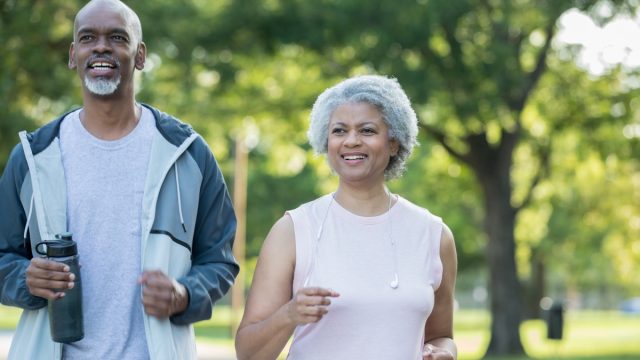
With the sheer number of wellness trends and so-called health “experts” out there, it can be hard to trust the information you hear about your physical and mental well-being. But by turning to research and data, you can parse out the hard truths about your health from the nonsense. And to help you out, we’ve compiled 50 facts about everything from your body to your brain that are surprising, but 100 percent true. From the unlikely sense heightened by anxiety to the shocking link between your birthday and your death, these astonishing science-backed health facts will blow your mind.
1
Urinating in a pool is dangerous for your heart.

Though definitely unsanitary, peeing in a pool might seem harmless for your health. After all, urine is sterile, as is chlorine. As it turns out though, urine and chlorine create dangerous chemicals when combined. In fact, that so-called “pool smell” is actually the scent of those chemicals, as Xing-Fang Li, an environmental chemistry professor who conducted research on the topic, told NPR. One of those chemicals—cyanogen chloride—is classified as a chemical warfare agent and can damage your heart and lungs. Other byproducts, called nitrosamines, can even cause cancer.
2
You typically only breathe through one nostril at a time.

You might think that your nostrils share the workload when it comes to inhaling and exhaling. And while they do, it’s not quite in the way that you might expect. You actually inhale and exhale through one nostril at a time, according to definitive research published in the journal Mayo Clinic Proceedings in 1977. Every few hours, the active nostril will take a break and the other one will take over until they ultimately switch back again. Put your finger under your nose and try it. Prepare to be amazed!
3
Anxiety can make bad smells even worse.
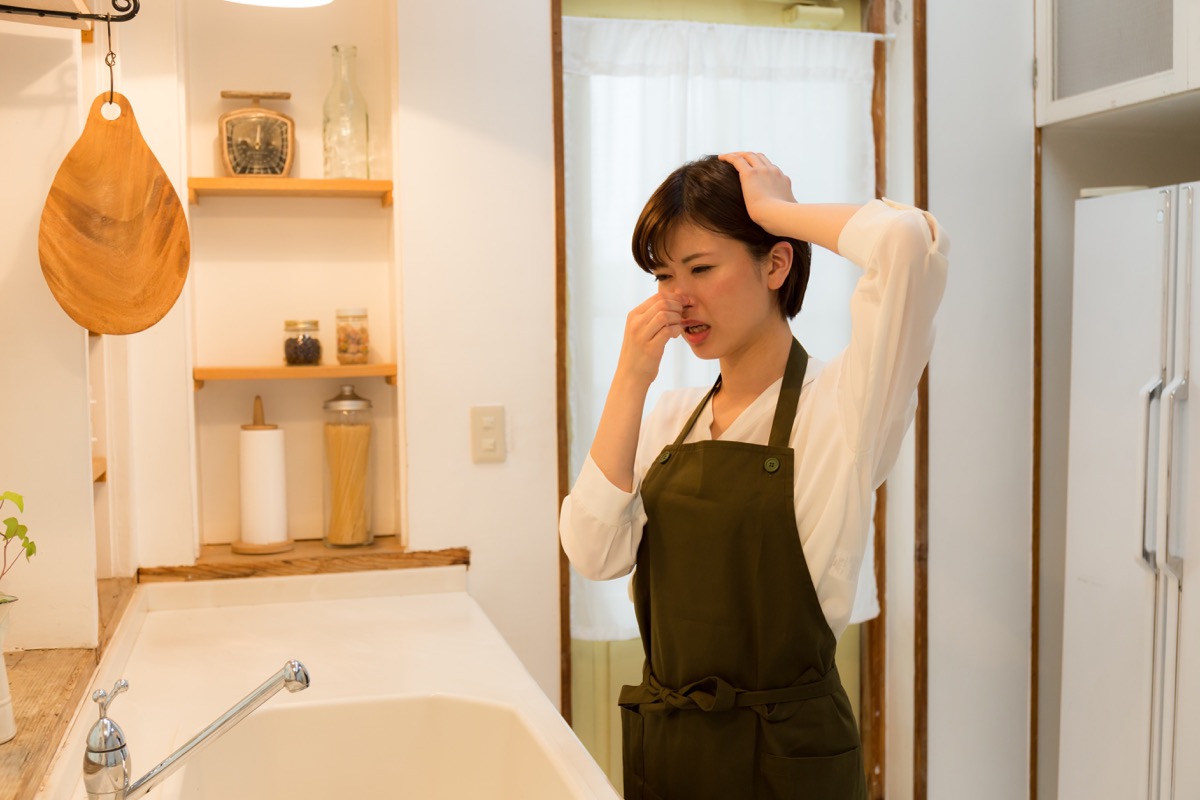
Speaking of your nose, a 2013 study published in The Journal of Neuroscience examined the way certain emotions affect your sense of smell. After exposing subjects to anxiety-inducing images like car accidents and war, researchers found that neutral scents became unpleasant and bad smells became even worse.
4
Men are more forgetful than women.

Numerous studies dedicated to comparing the memory abilities of men and women consistently prove that men are more forgetful than women. One 2015 study published in The Quarterly Journal of Experimental Psychology hypothesizes that this could be due to the varying brain structures of men and women—specifically, that the hippocampus (the part of the brain associated with memory) begins to decrease in volume faster in men than in women.
5
Your pupils can hint at your Alzheimer’s risk.
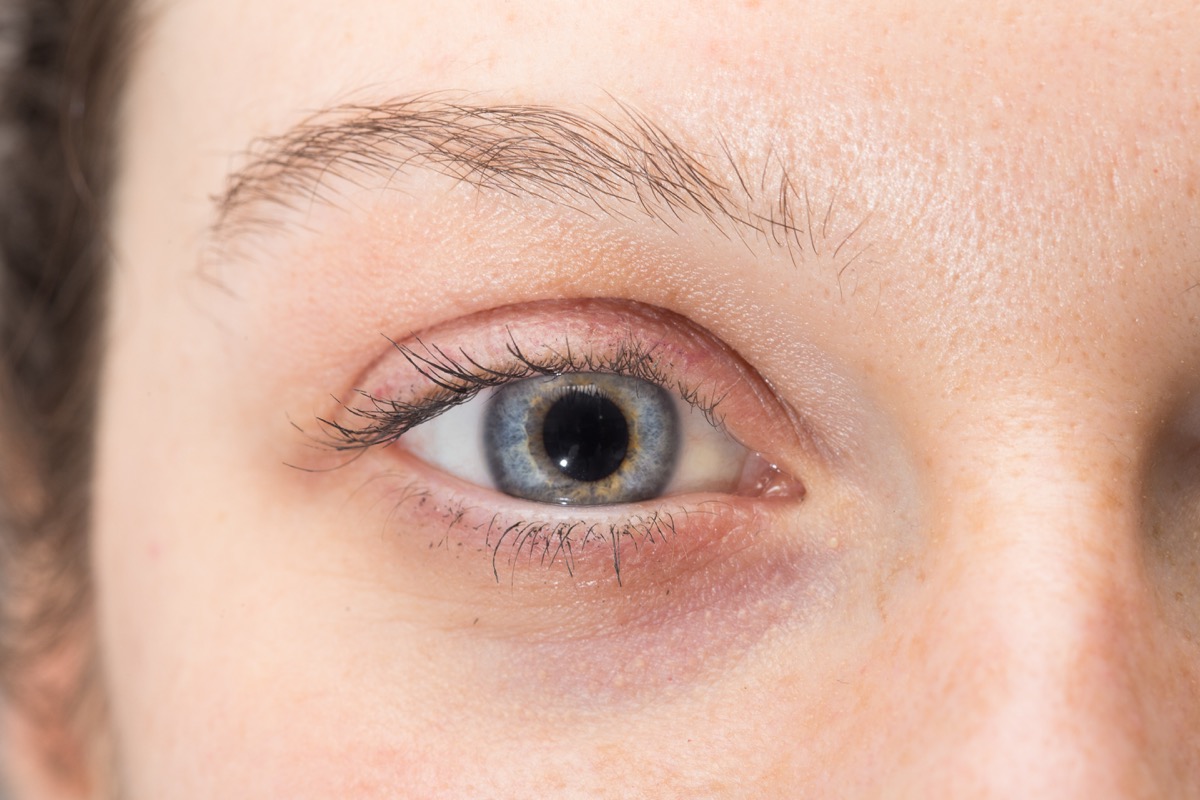
Of course, the telltale sign of Alzheimer’s disease is memory loss, but dementia also manifests itself in your eyes. In a 2019 study published in the journal Neurobiology of Aging, researchers noted that the disease affects the locus coeruleus, a cluster of neurons in the brainstem responsible for pupillary responses, among other things. As a result, individuals with cognitive impairment who are at risk of developing Alzheimer’s have greater pupil dilation while performing cognitive tasks.
6
Eating eggs improves your reflexes.
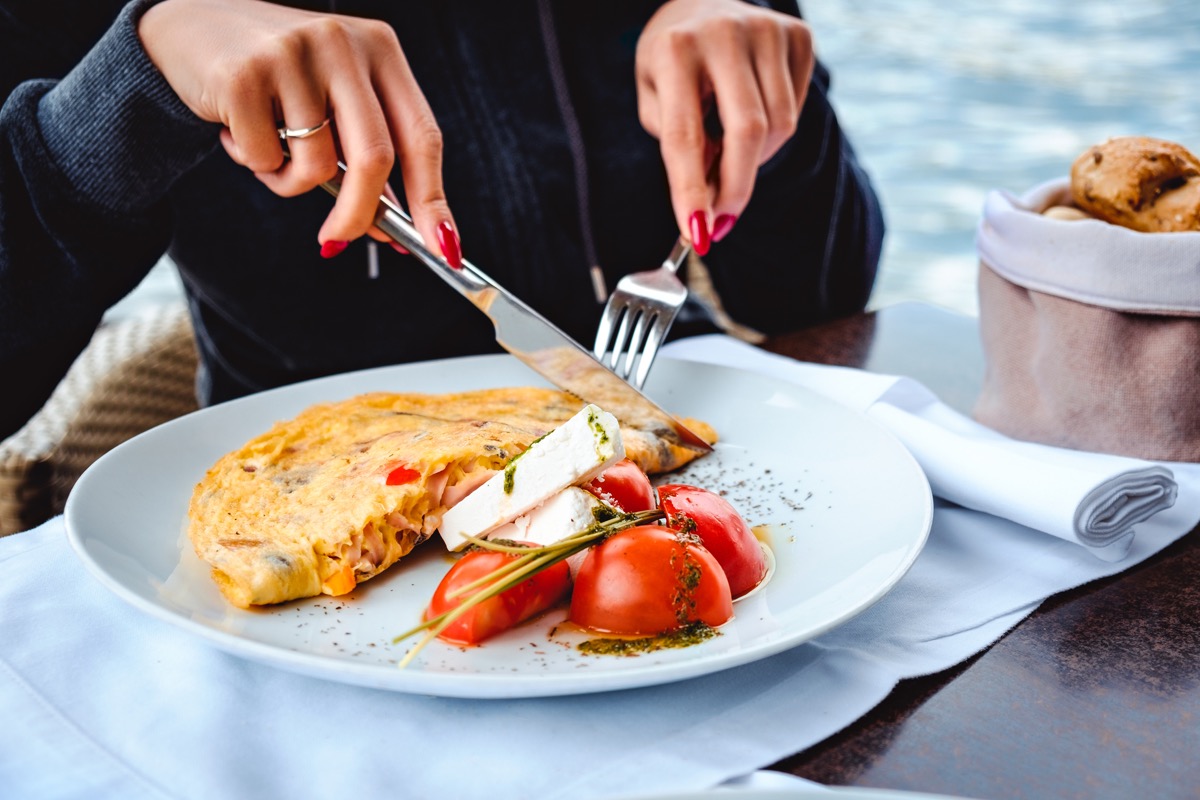
If you want to be able to respond more quickly, you can start by having an omelette for breakfast. Eggs contain an amino acid called tyrosine, which the body synthesizes into norepinephrine and dopamine, compounds that increase energy and alertness and improve mood. In a 2014 study published in the journal Neuropsychologia, researchers even found that tyrosine enhances our response time and improves our intellectual performance, not unlike a medical stimulant like Ritalin or Modafinil.
7
Your blood makes up nearly one-tenth of your total body weight.
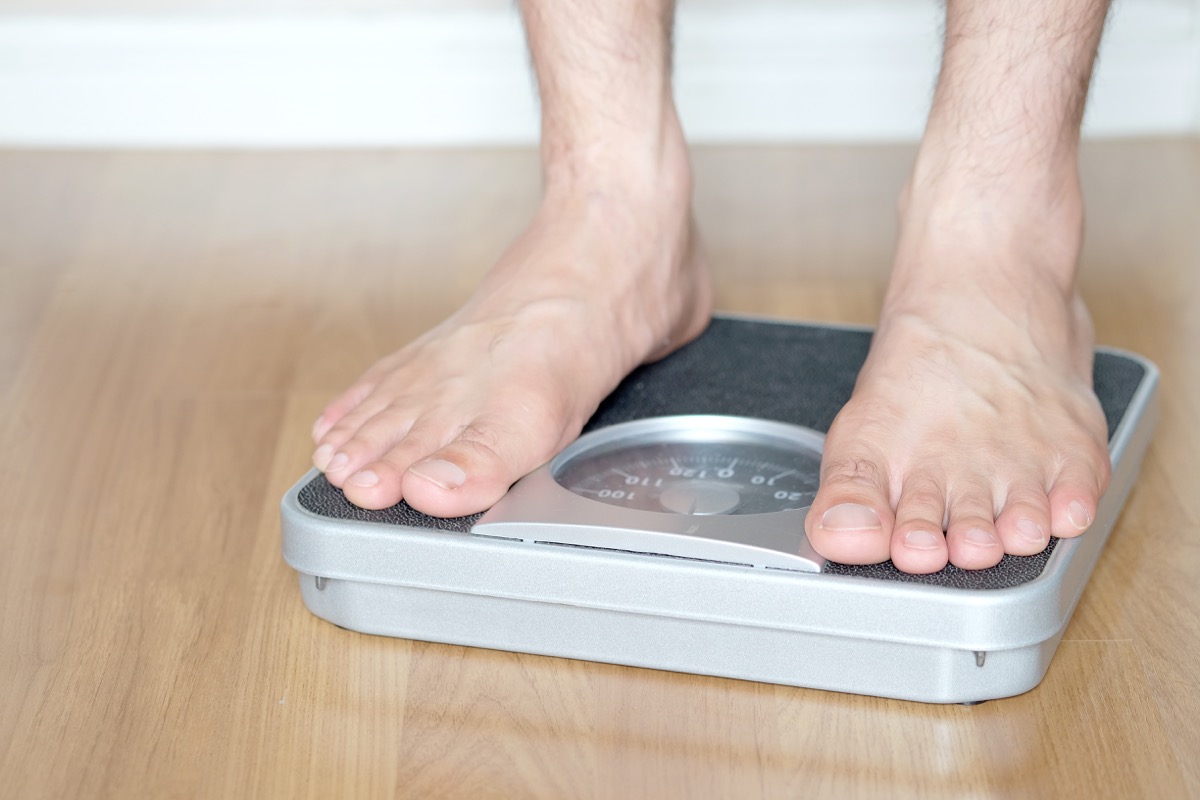
When you look at how much you weigh on the scale, you probably think that number is compromised of fat and muscle. But did you know that your blood makes up 8 to 10 percent of your total body weight? Hematologist and oncologist Daniel Landau, MD, explained to Live Science that the average adult has anywhere from 1.2 to 1.5 gallons of blood flowing through their veins.
8
But a newborn baby is born with barely any blood.

Naturally, newborn babies don’t have nearly as much blood as adults do. So how much are they working with exactly? According to Landau, it’s typically no more than 1 cup of blood for the average 5-to-8-pound newborn.
9
And how much you weigh at birth can determine your allergy risk.
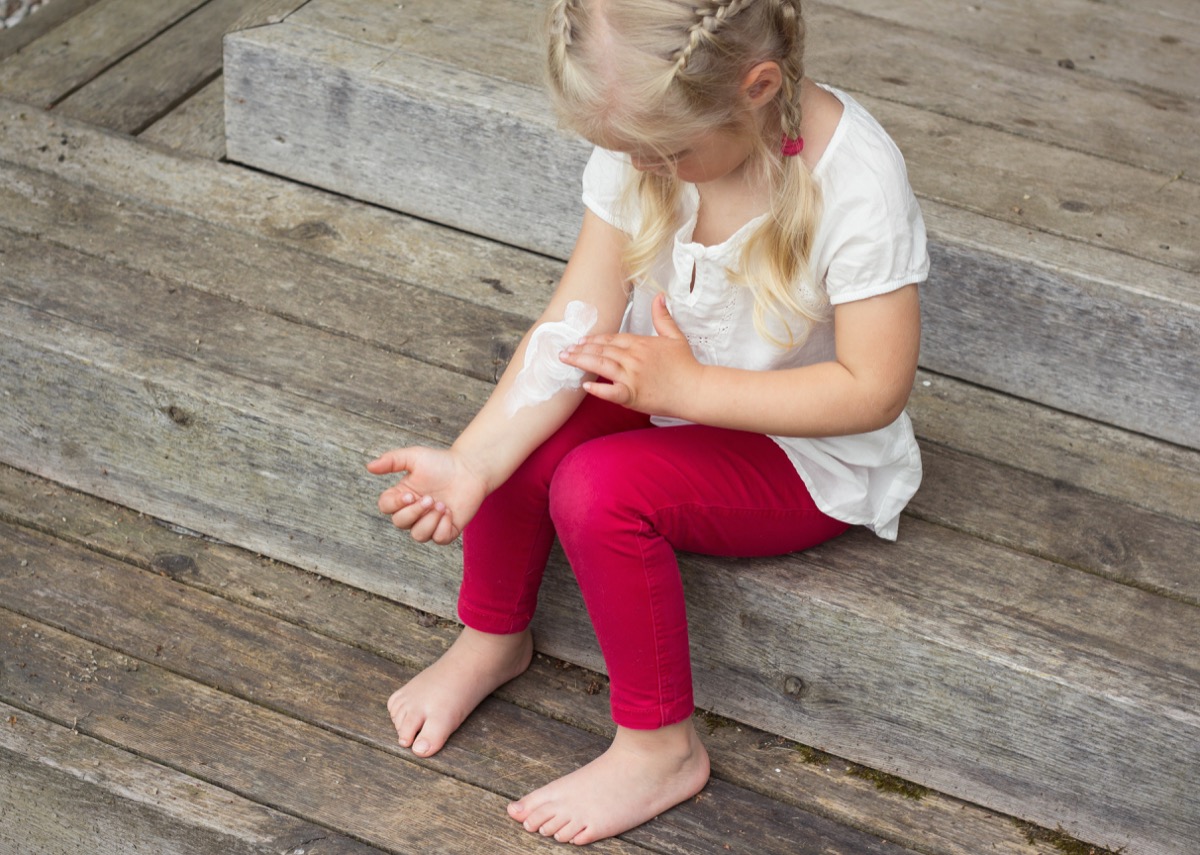
Though it’s hard to tell whether a person will develop allergies, scientists have found that it is possible to determine an infant’s likelihood of developing childhood food allergies or eczema based on one thing: their weight. In a 2019 meta-analysis from the University of Adelaide, researchers found that for each kg increase in birth weight, there was a 44 percent increase in the risk of childhood food allergies and a 17 percent increase in the risk of eczema.
10
A tick bite can make you allergic to red meat.
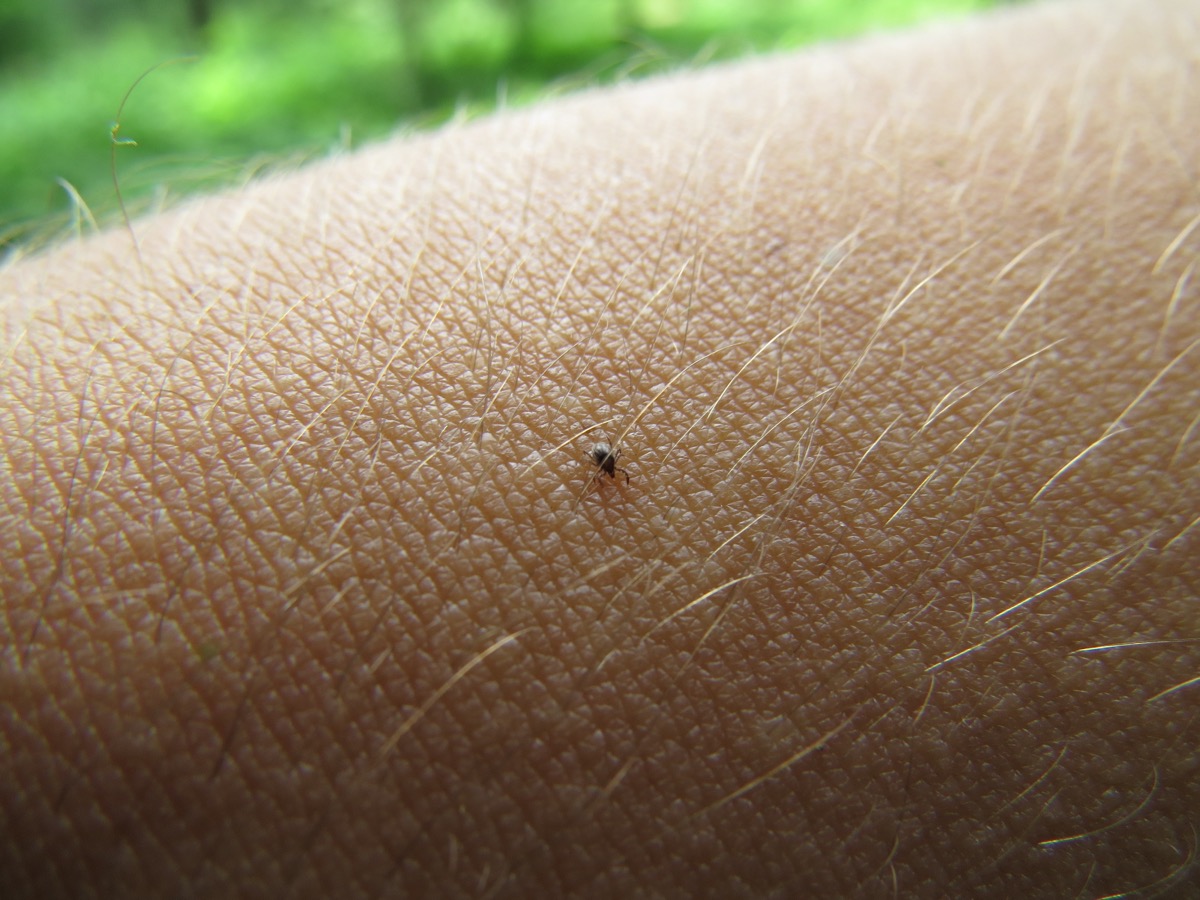
There are plenty of food allergies out there, but few are the result of an insect bite. In a strange and growing trend, some people who get bitten by the Lone Star tick develop a sudden allergy to red meat, according to the American College of Allergy, Asthma, and Immunology. Beef, lamb, pork, and goat (which are technically classified as red meats) can make people with this allergy experience vomiting, cramps, difficulty breathing, and hives. In severe cases, it can cause the person to stop breathing entirely. For some people, the allergy fades over time, but for others, it’s permanent.
11
And red meat makes body odor worse.
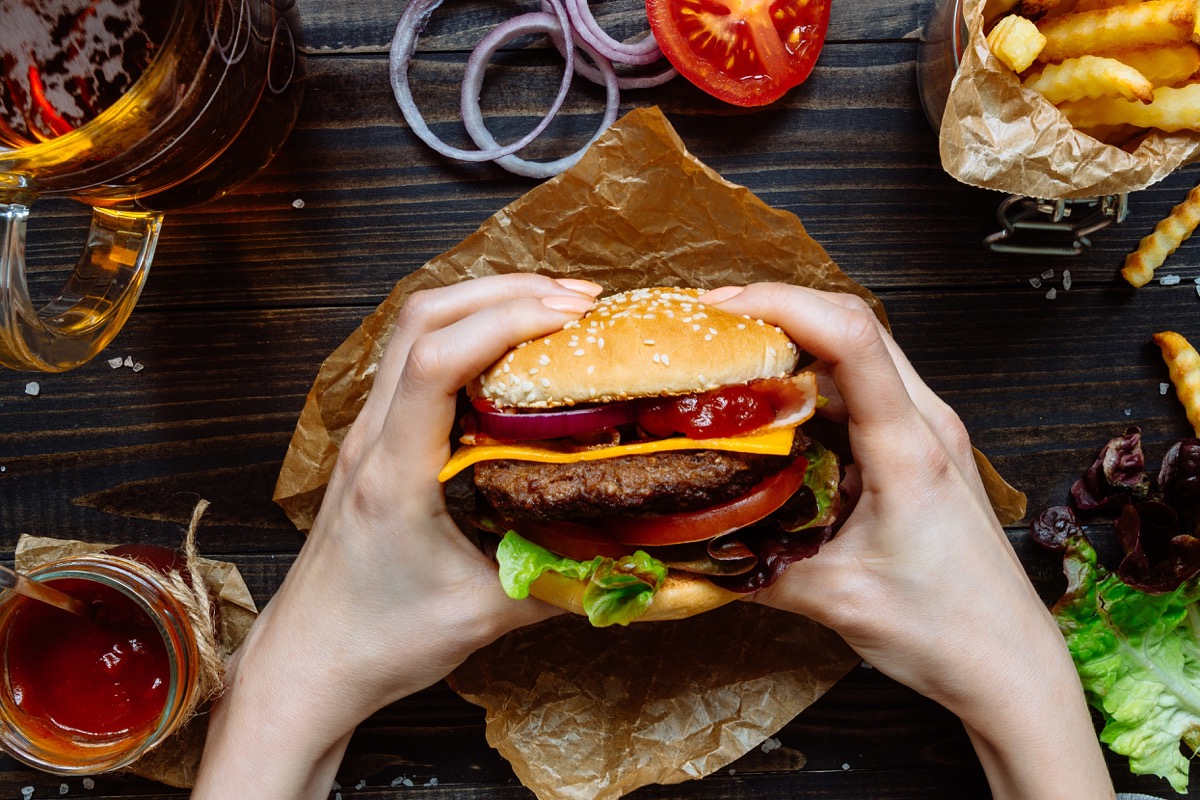
Carnivores, beware. Though diet is not the only factor that affects natural body odor, a 2006 study published in the journal Chemical Senses found that consuming meat can have a huge effect on the “attractiveness” of your body odor. Participants who refrained from eating red meat were generally perceived as smelling more pleasant, less intense, and more attractive overall.
12
The scent of apples can ease claustrophobia.
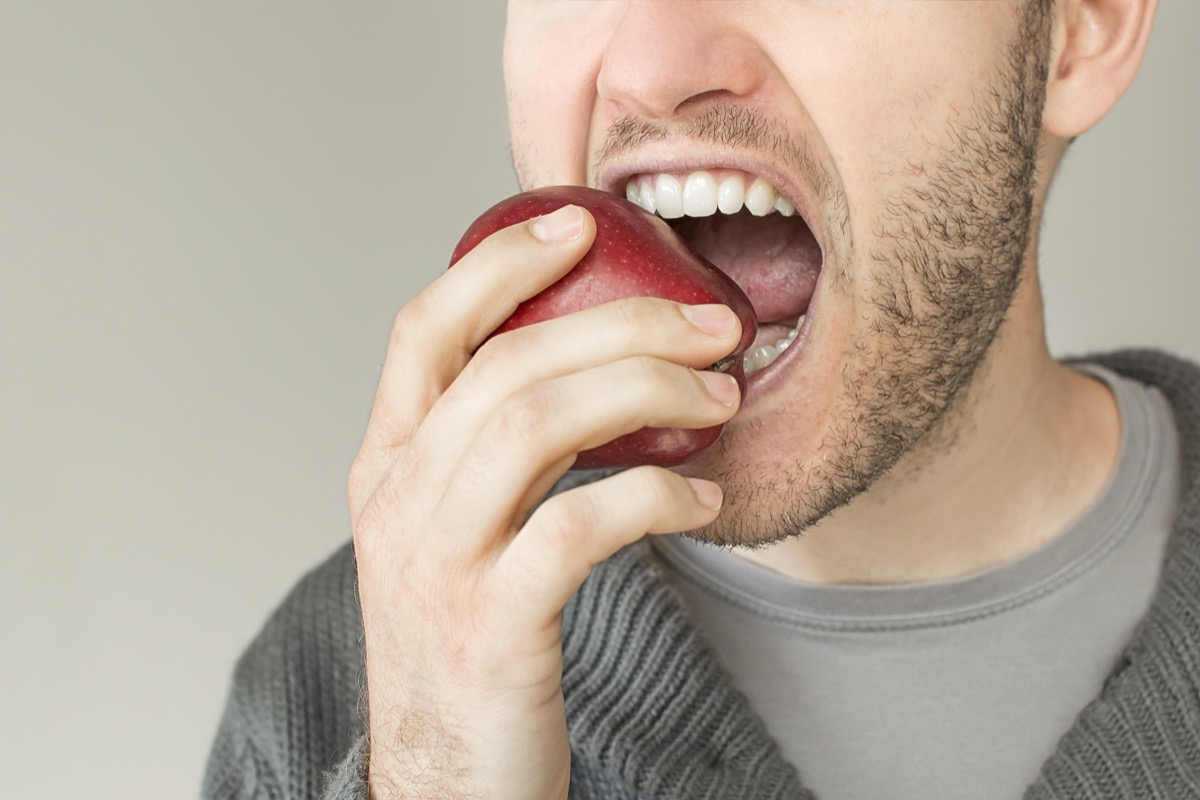
An apple a day can keep your claustrophobia away. According to Alan Hirsch, MD, of the Smell & Taste Treatment and Research Center in Chicago, smelling a green apple can change your perception of space, making rooms feel larger than they really are. Hirsch conducted a 1995 experiment on the subject—and during this study, he also found that cucumbers have a similar effect, while the smell of barbecue smoke has the opposite effect.
13
Most of the fat you lose exits your body via your lungs.
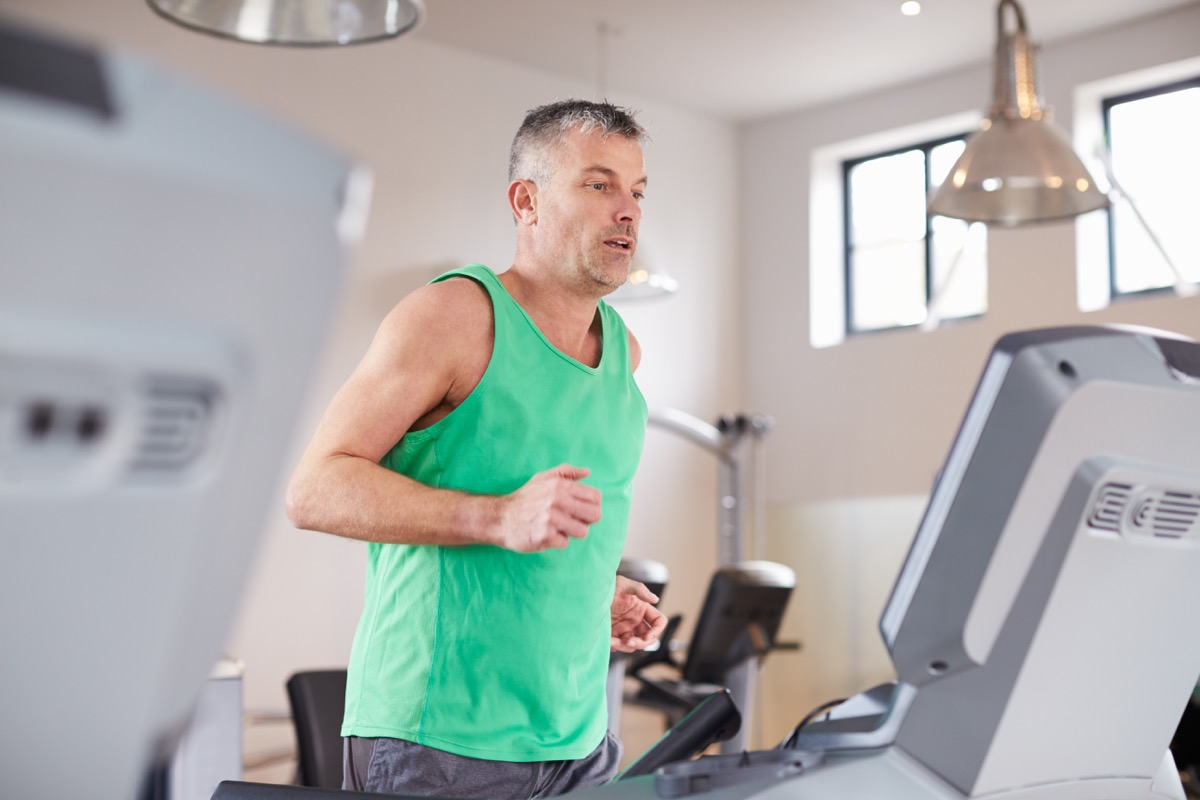
While deep breaths don’t burn too many calories, this is how most burned-off fat exits your body. You may have thought it was mostly through sweat, urine, or some other excretion, but the truth is that as you exercise or go about your day, the majority of the fat you lose—84 percent, according to 2014 research published in the British Medical Journal—is converted into carbon dioxide and leaves your body through your lungs. The remaining 16 percent is converted to water, which exits your body through urine, feces, sweat, tears, or other bodily fluids.
14
Humans are the only animals with chins.

Try to picture another animal besides a human with a chin. You’re probably not able to, right? Well, that’s because humans are the only animals with chins. Of course, other animals have jaws, but as anthropologist James Pampush told The Atlantic, “only humans have chins.” Though scientists aren’t entirely sure why we have this feature, one theory is that our chins make it easier for us to chew. Who knew?
15
A surprising number of people have an extra bone in their knee.
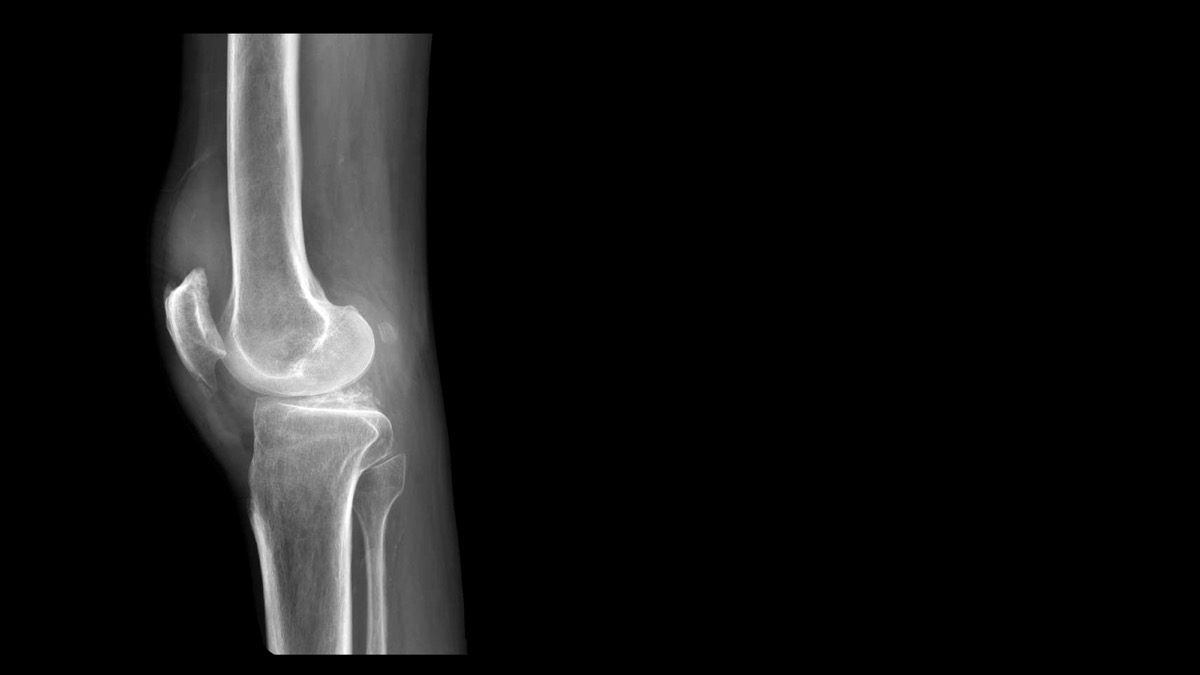
It turns out that some people have an extra bone in their knee called a fabella. While this little bone with an unknown purpose was previously less common, over the last century, it’s started to pop up on X-rays more and more. According to a 2019 study published in the Journal of Anatomy, humans were nearly 3.5 times more likely to have a fabella in 2000 than in 1900.
16
More than half of your bones are in your hands and feet.
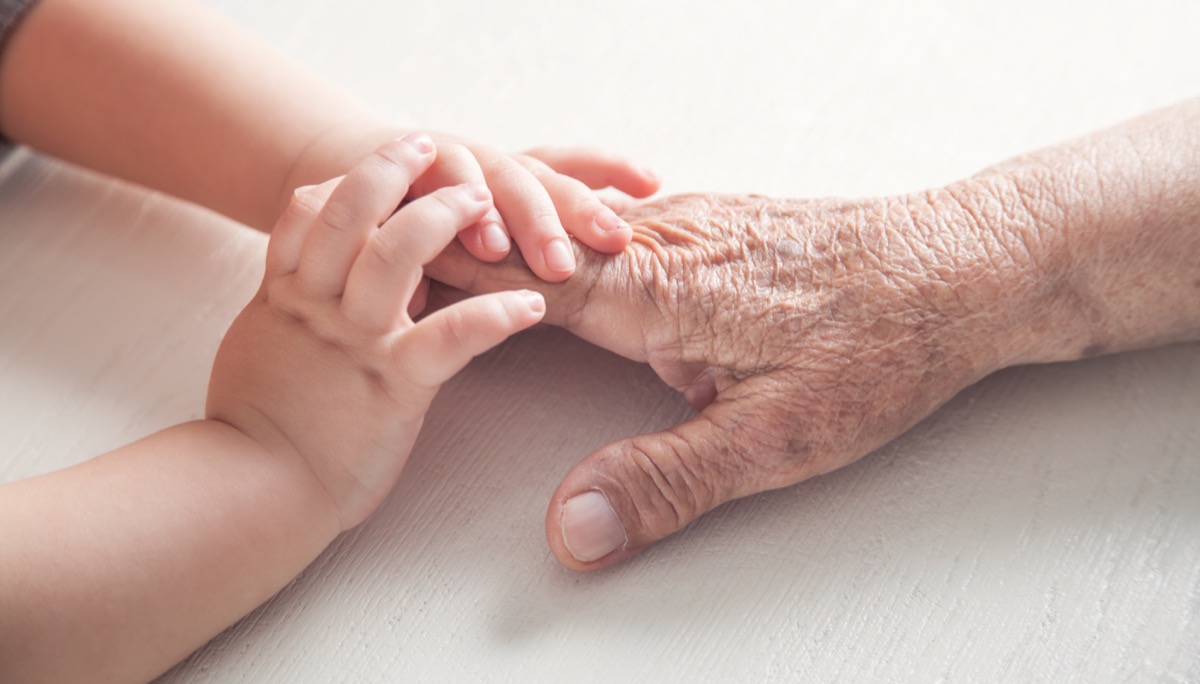
There are 206 bones in the adult human body. And with 27 bones in each hand and 26 in each foot, these skeletal structures are the most complex, amounting to 106 bones total between all four limbs, according to the BBC.
17
Wearing heels helps you make better choices.

A 2013 study published in the Journal of Marketing Research found that people shopping with heels on had a heightened sense of balance, which helped them make better choices when it came to spending. With balance on the brain, shoppers were more likely to avoid big purchases, opting instead for average-priced products. This is called the equilibrium effect—and it holds true for those who shop immediately following a yoga class as well.
18
Riding a roller coaster could help you pass a kidney stone.

After multiple people reported passing kidney stones while riding Walt Disney World’s Big Thunder Mountain Railroad ride, a research team from Michigan State University decided to investigate the phenomenon in 2016. The researchers conducted tests with a model kidney and found that there was a 64 percent kidney stone pass rate for those seated in the rear of the roller coaster. That number was 16 percent for those seated in the front. According to the head researcher, the ideal coaster for passing kidney stones “is rough and quick with some twists and turns, but no upside down or inverted movements.” And clearly, you’ll want that front row seat.
19
Fingernails grow faster on your dominant hand.
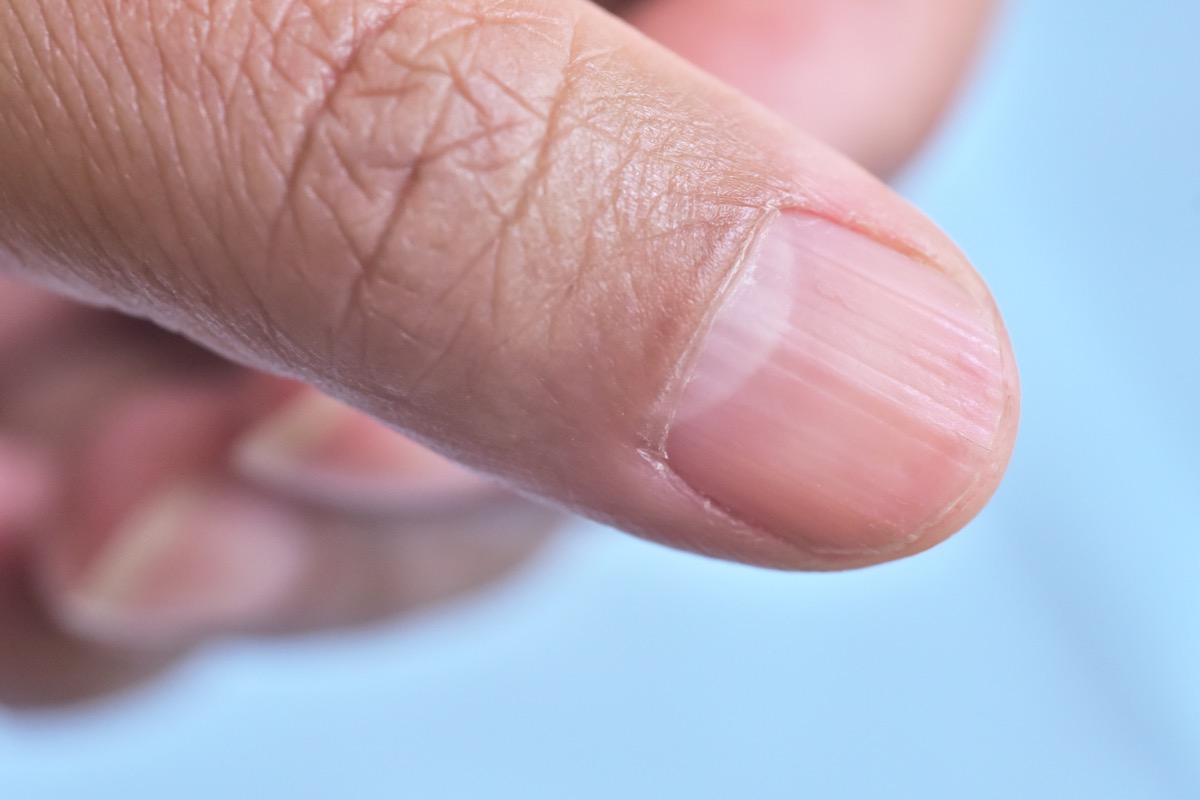
The American Academy of Dermatology (AAD) says that a fingernail takes around six months to grow from base to tip and that toenails can take up to a year to do the same. But there are some factors that make nails grow faster. According to the AAD, fingernails grow faster on your dominant hand, as well as on your bigger fingers. They also grow faster during the daytime and during the summer months.
20
You are significantly more likely to die on your birthday than on any other day of the year.

According to a 2012 study published in the journal Annals of Epidemiology, humans are 13.8 percent more likely to die on their birthday than on any other day. The study, based on Swiss mortality statistics from 1969 to 2008, found that the deaths were primarily due to heart and brain diseases, suicide, and fatal accidents.
21
The average adult spends more time on the toilet than they do exercising.
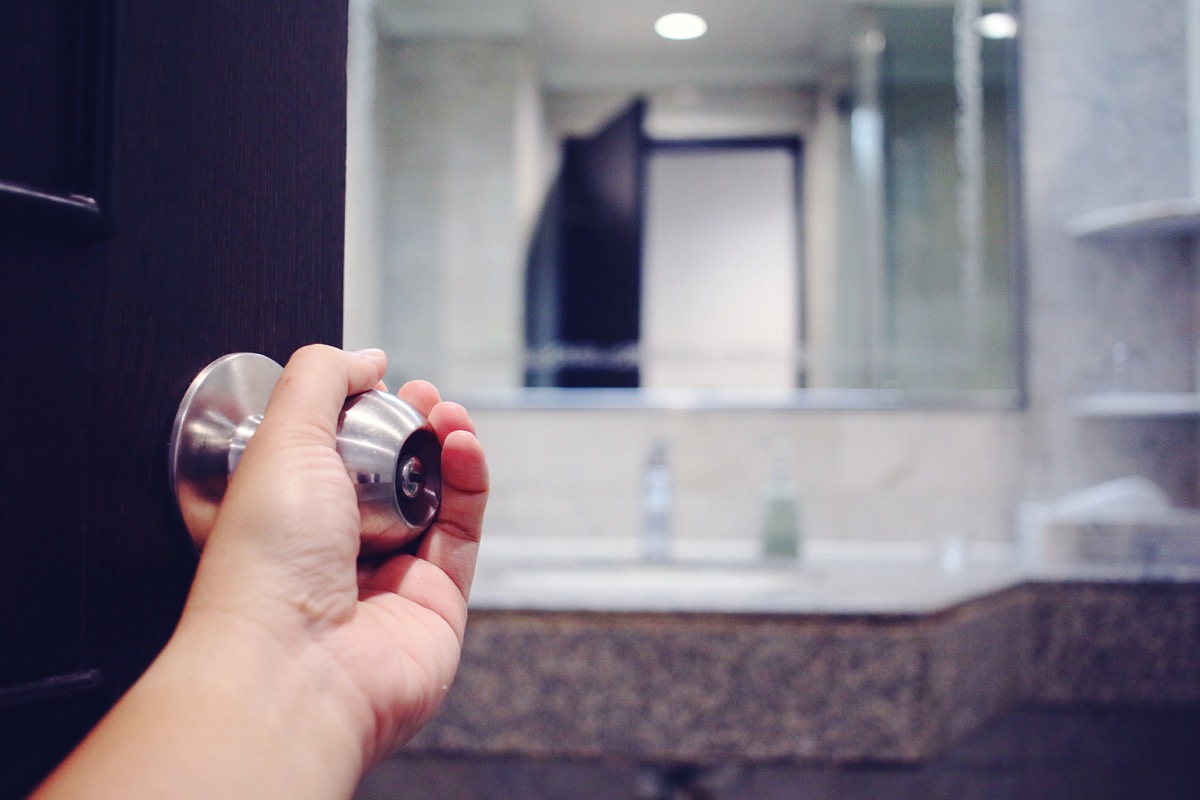
It can be hard to fit a workout into your daily routine. But of course, you can’t really deny your regular need to do your business in the bathroom. That’s why, according to a 2017 study by British non-profit UKActive, adults spend an average of 3 hours and 9 minutes on the toilet each week, compared to around 1 hour and 30 minutes being physically active during that same time span.
22
Chewing gum sharpens your focus.
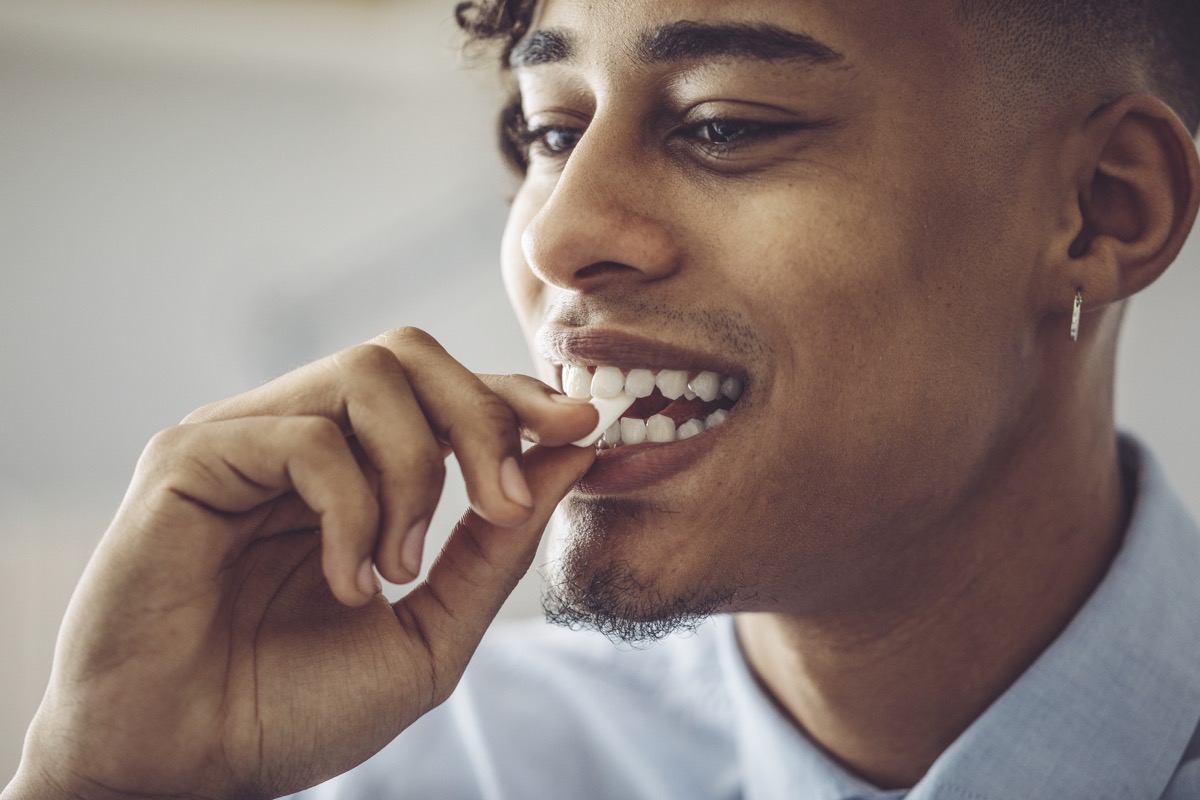
Want to feel more focused at work? Pop a piece of gum into your mouth. One 2012 study published in the journal Nutritional Neuroscience found that, when chewing gum, people became more alert. That’s because the brain associates chewing with nutrients and food and primes itself to be at maximum levels of alertness anytime there is mouth movement.
23
Procrastination and impulsivity are inherited behaviors.

If you find yourself constantly putting off your responsibilities, you might be able to blame your parents. Though procrastination may seem like a developed trait, it turns out that it’s actually inherited. A 2014 study published in the journal Psychological Science found that the same genes that can lead to procrastination also cause impulsivity, which makes sense when you think of how impulsive behavior is often the driving force behind procrastination. (“I could do that, but right this very minute, I feel like doing something else.”)
24
Taking pictures messes with your memory.

The next time you’re on vacation, put down the camera and cherish the moment instead. Otherwise, you’re likely to forget it. One 2018 study published in the Journal of Applied Research in Memory and Cognition tested the effects of photo-taking on memory by asking students to remember a series of paintings in three situations: with no camera, with a camera, and with a Snapchat-like app where photos disappear. Researchers found that those who took pictures always had a harder time remembering the details of the painting, regardless of whether the photo was permanently stored.
25
Physically active pregnant women have smarter babies.
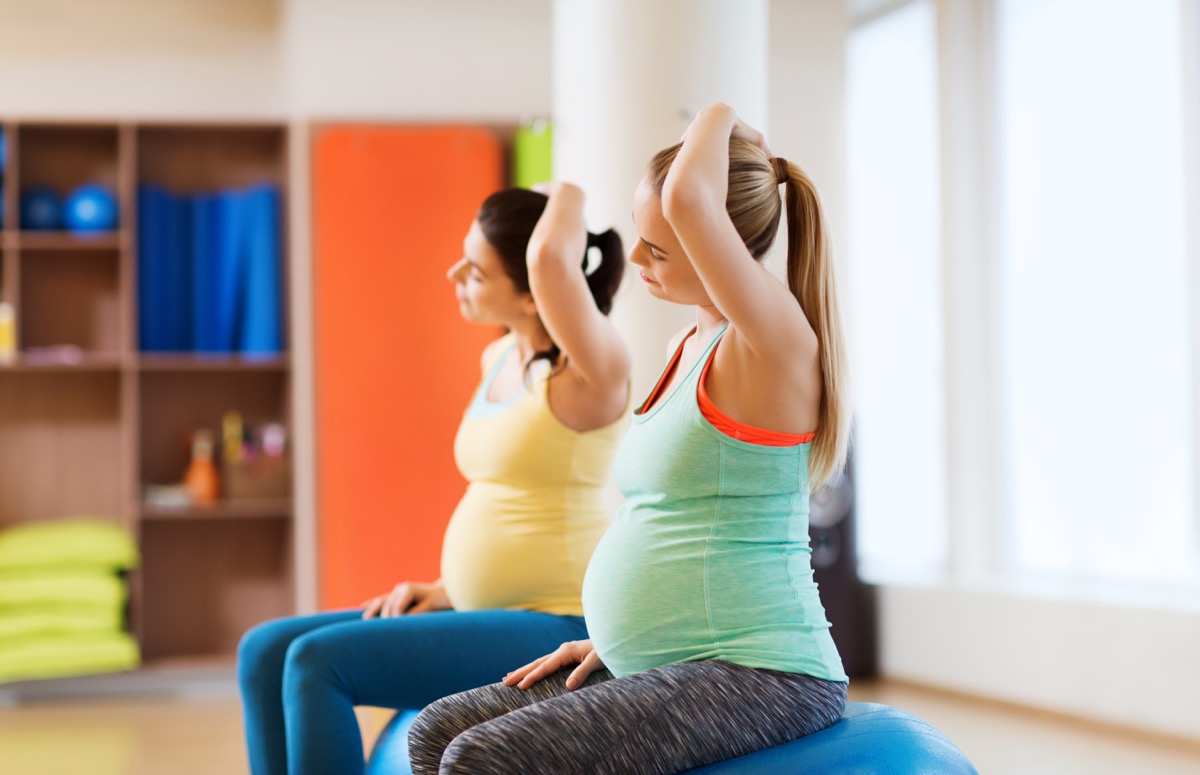
Intelligence is largely hereditary. However, if you want to better your chances of having a smart child, staying fit and active might help. A 2013 study published in the Journal of Clinical and Experimental Neuropsychology found that pregnant women who exercised three times a week for 20-minute intervals improved their child’s brain function and development.
26
Reading a tangible book promotes better comprehension than reading on a screen.

When you want to start a new novel, put down your Kindle or phone and pick up an actual book instead. A 2016 study from Dartmouth College compared the comprehension levels of students who did their reading via physical print-outs to students who used digital devices. They found that abstract concepts were easier to understand when read on paper. Students using only screens to learn had a much harder time grasping complex ideas.
27
Oatmeal helps fight depression.
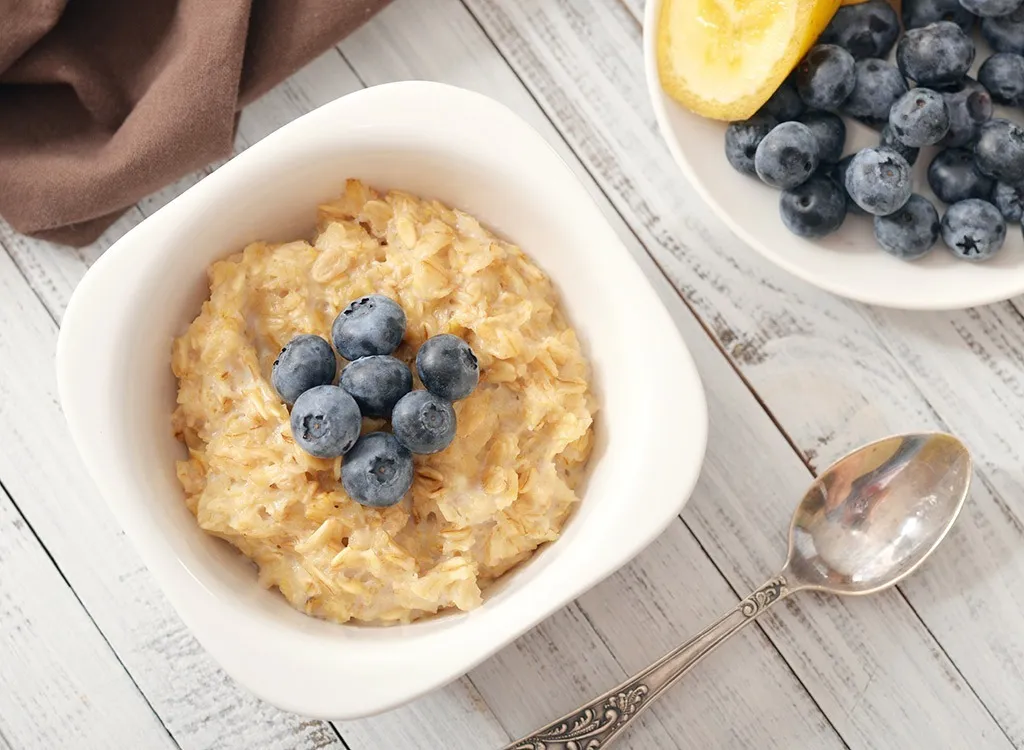
People experiencing depression and insomnia (or both, as they’re often linked) have a lack of serotonin, a hormone synthesized from the amino acid tryptophan. So, eating foods high in tryptophan—like oatmeal, eggs, chicken, and peanuts—can help regulate mood and sleep, according to a 2016 study published in the journal Nutrients.
28
And so does coffee!

Caffeine can actually help you ward off depression, too. A 2016 meta-study on the relationship between coffee and depression published in the Australian and New Zealand Journal of Psychiatry found that each cup of caffeinated coffee consumed per day decreased a person’s risk of depression by 8 percent.
29
Bananas can boost your mood, too.

The next time you’re feeling down, reach for a banana. Bananas are not only a healthy snack, but they’re also a happy one. The pulp of the fruit contains up to 10 mg of dopamine, according to 2000 research published in the Journal of Agricultural and Food Chemistry. (The peel contains even more, but we don’t recommend eating that part!)
30
Consuming hot liquids can cool you down.

It may sound counterintuitive, but drinking hot tea or coffee can actually help cool you down on a hot day. That’s because of increased perspiration, according to a 2012 study published in the journal Acta Physiologica. As your sweat evaporates, you wind up feeling cooler than you did at first sip.
“What we found is that when you ingest a hot drink, you actually have a disproportionate increase in the amount that you sweat,” study author Ollie Jay told Smithsonian magazine. “Yes, the hot drink is hotter than your body temperature, so you are adding heat to the body, but the amount that you increase your sweating by—if that can all evaporate—more than compensates for the added heat to the body from the fluid.”
31
Stress heightens allergies.
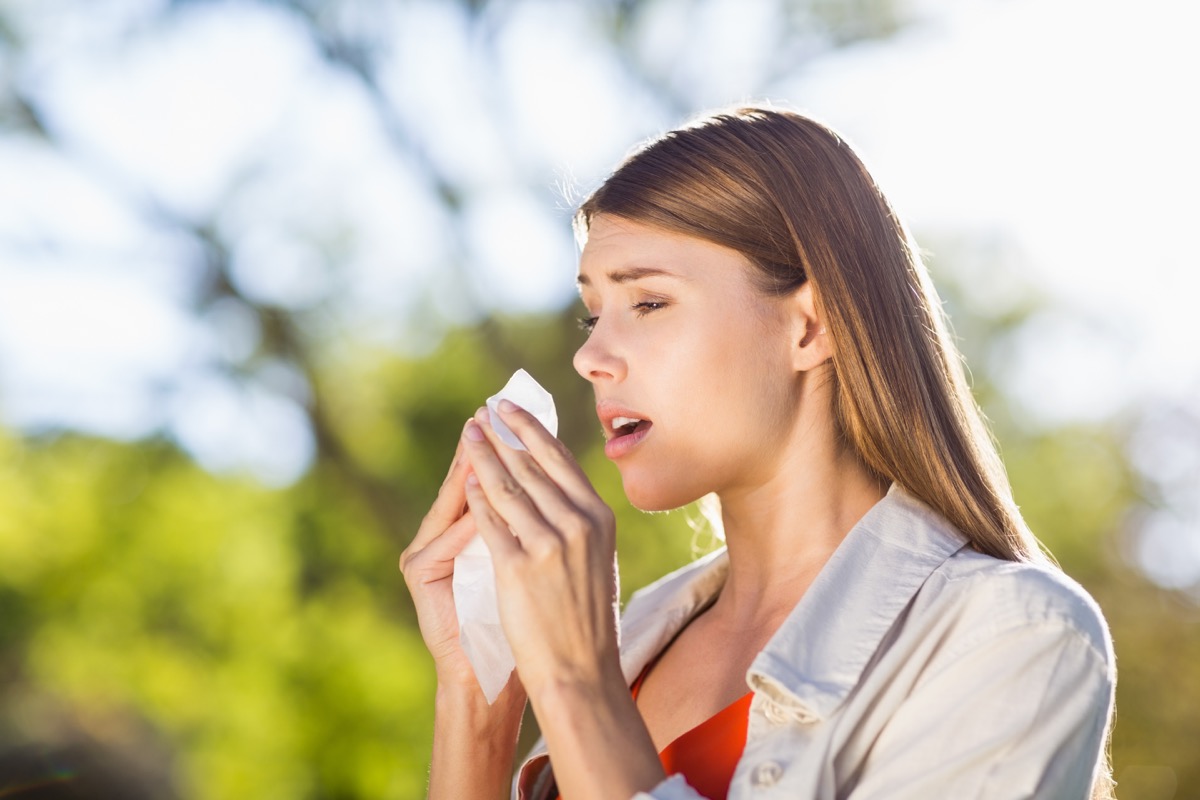
Stress and allergies do not mix well. In fact, stress can make allergy symptoms worse. In a 2009 study published in the journal Psychoneuroendocrinology, subjects with hay fever had significantly more severe cutaneous allergic reactions in stressful situations compared to non-stressful situations. During the stressful scenarios, subjects had higher levels of IL-6, an interleukin that is part of the inflammatory allergic response to an allergen.
32
Exercising when you’re young slows bone deterioration in old age.
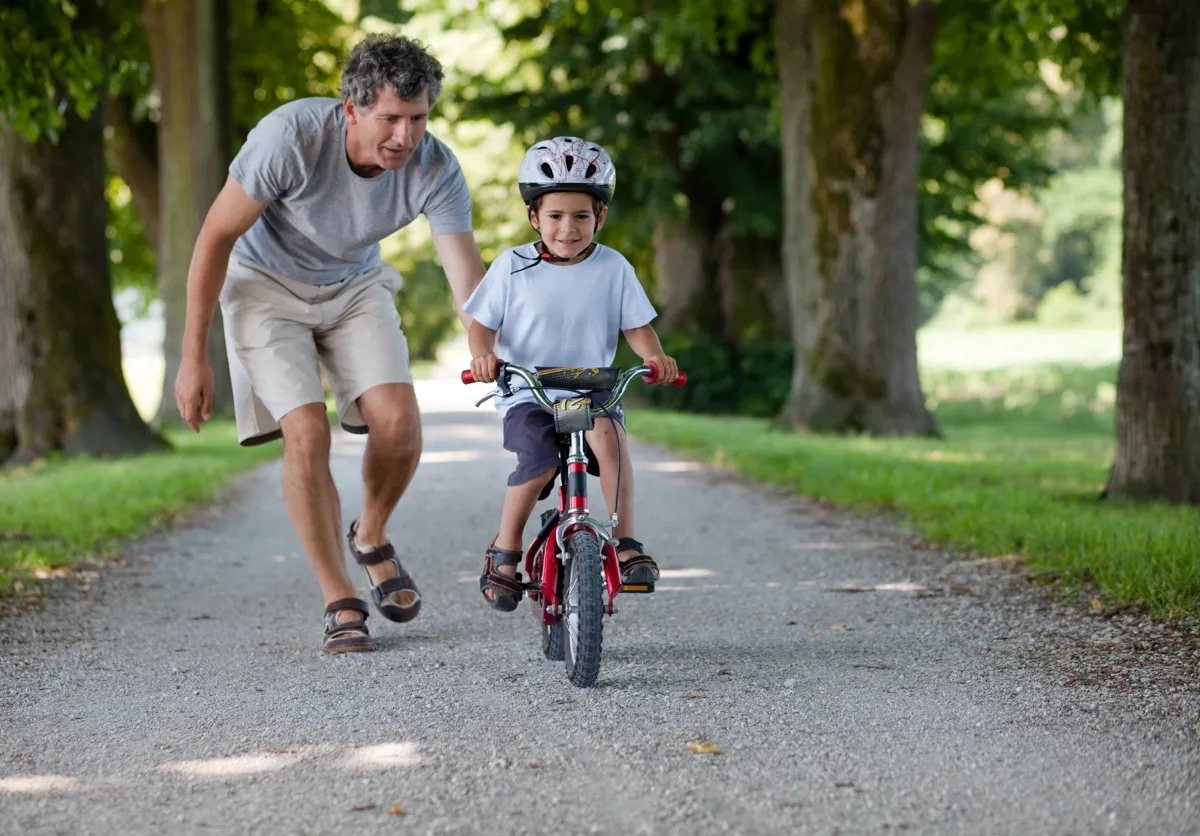
Though exercising is crucial to healthy body function at all ages, it is especially important when you’re young. In fact, science has found that being active as a child and young adult can help you stay stronger later in life. According to a 2014 study published in the Scandinavian Journal of Medicine & Science in Sports, exercising during childhood helps fortify bones and prepare them for the wear-and-tear that comes with aging. Though osteoporosis and the loss of bone mass happens to all of us as we mature, a history of exercise ensures that you stay stronger for longer.
33
Eating chocolate can make your skin look healthier.
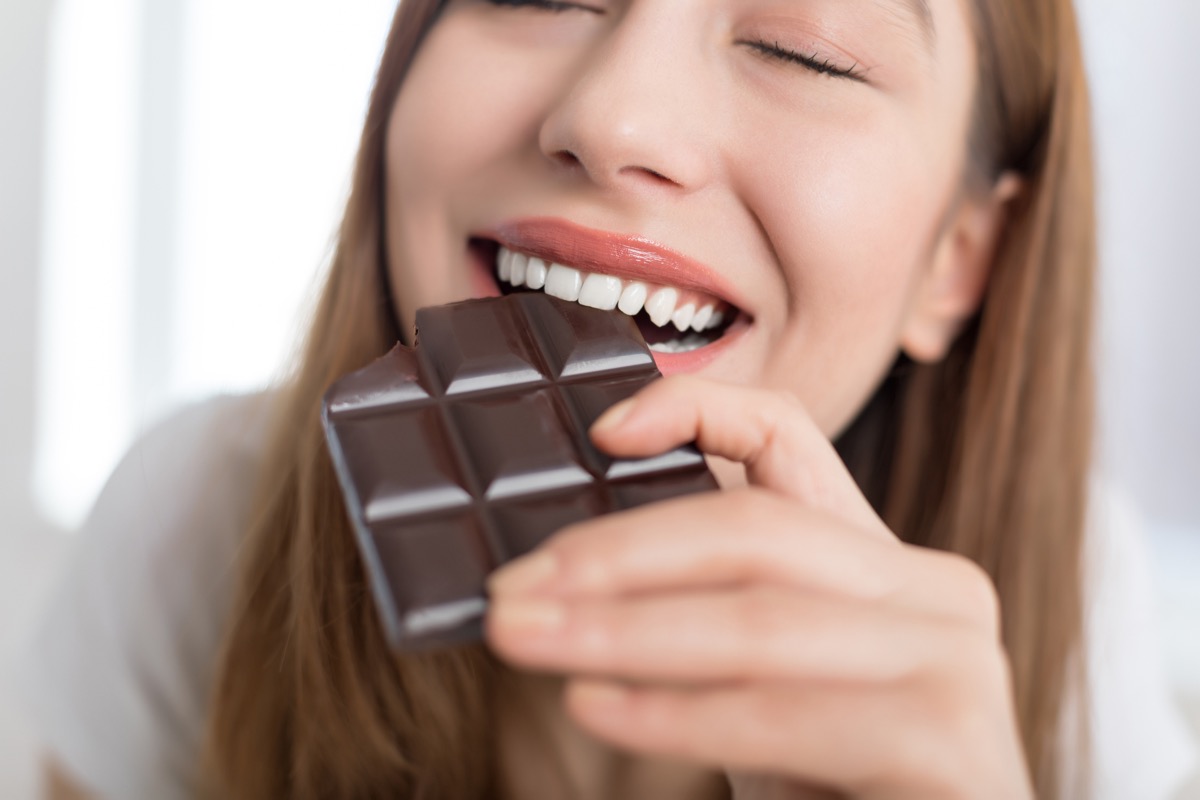
Good news, cocoa fiends! You can think of that dark chocolate bar as a skin treatment and as a delicious snack. According to a 2014 study published in Nutrition Journal, dark chocolate has many beauty benefits, including the ability to reverse sun damage and prevent wrinkles. That’s because antioxidants in dark chocolate called flavanols promote the production of collagen, thereby improving skin elasticity and moisture.
34
And people who eat chocolate on a near-daily basis are thinner than those who don’t.
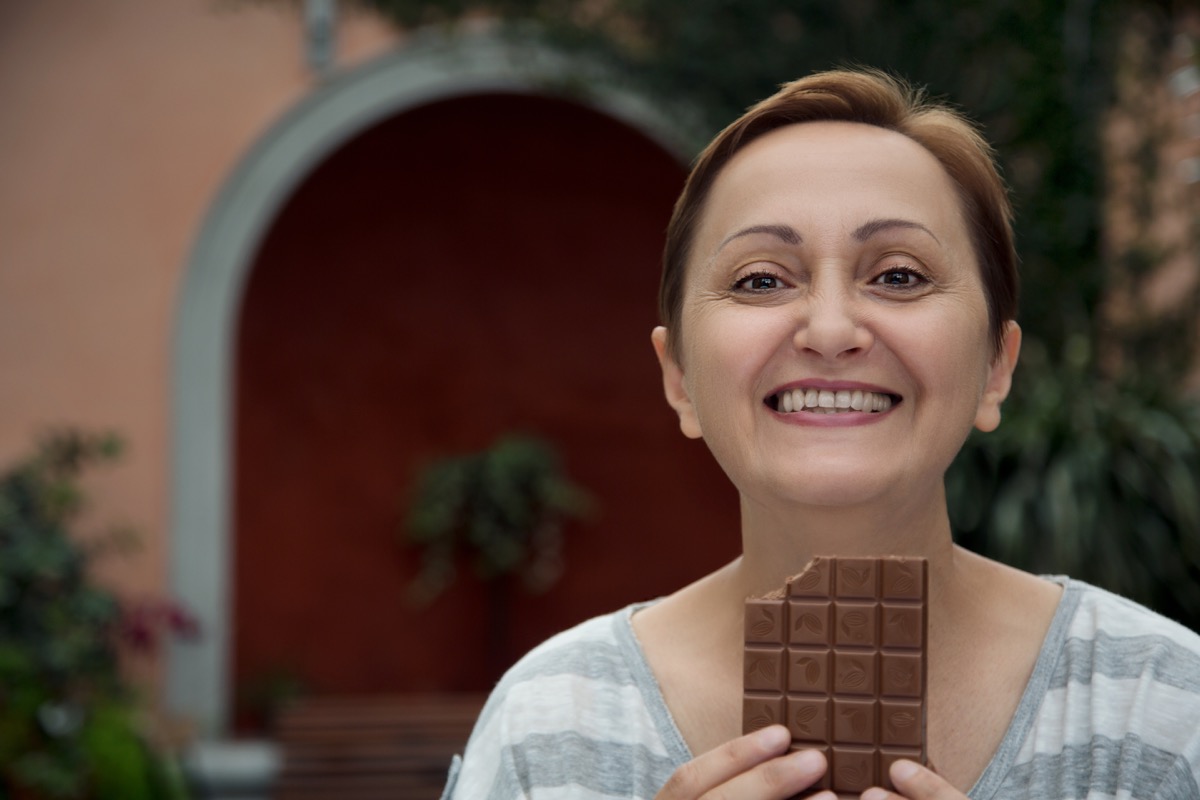
As if treating your skin wasn’t enough of an excuse to eat chocolate daily, a 2012 obesity study published in JAMA Internal Medicine found that people who consume chocolate more often tend to be thinner. The results were consistent, regardless of the type of chocolate consumed. Those who ate any kind of chocolate at least five times a week were statistically thinner than the rest of the subjects. Woo-hoo!
35
Basking in the morning sun helps with weight loss.
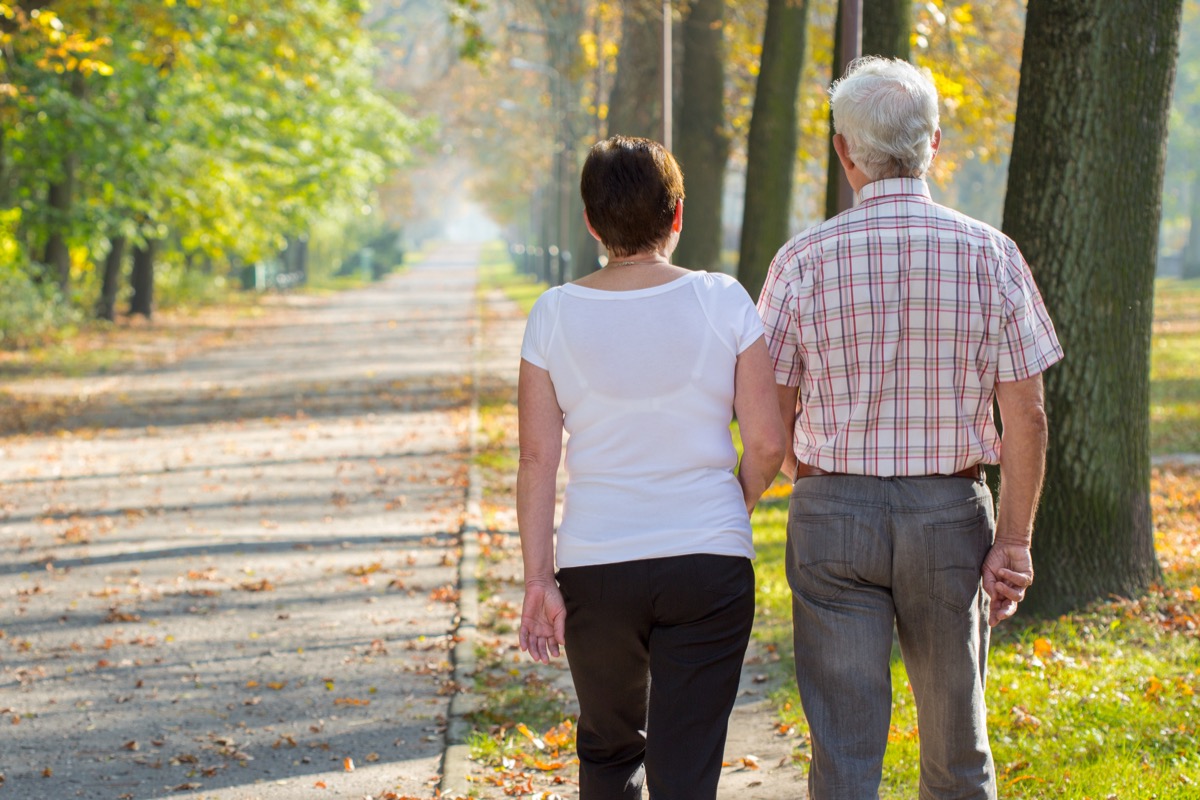
In addition to that fun-size Snickers snack, spending your mornings in the sun should be a part of your weight loss plan. A 2014 study published in the journal PLOS One found that exposure to morning sunlight has a positive effect on body mass index (BMI).
According to the research, just 20 to 30 minutes of natural light in the morning—even on a not-so-sunny day—is enough to impact BMI. Without sufficient light, the body may have trouble regulating metabolism, which can eventually cause weight gain.
36
Massaging your scars will help them fade.
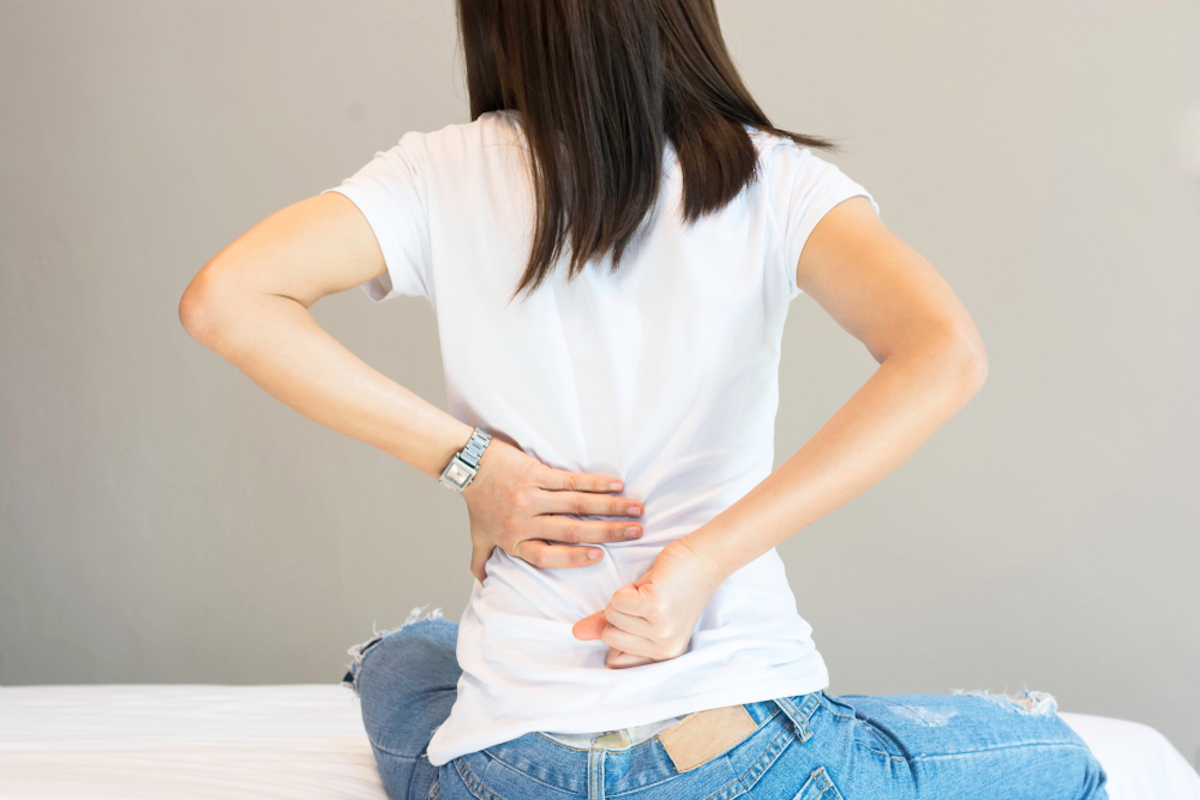
Most drugstores have over-the-counter creams and oils that are made to fade scars. However, there’s another equally effective remedy that doesn’t cost a thing: massaging or rubbing the scarred area. Yes, rubbing your scars a few times a day can prevent excess collagen buildup, which is what makes scars thick and ropy. In an article for Verywell Health, physical therapist Brett Sears suggests using “one or two fingers to massage your scar in a direction that is perpendicular to the line of the scar,” which “helps to remodel the scar and ensures that the collagen fibers of the scar are aligned properly.”
37
And fish skin can be used to heal burns.

In Brazil, doctors use tilapia skin to bandage and treat second- and third-degree burns. According to an investigation by PBS News Hour, the fish skin reportedly cuts down on healing time, reduces the need for pain medication, and helps with scarring, all due to an abundant amount of collagen proteins. In 2016, scientists from Nanyang Technological University in Singapore also discovered that, in general, fish scale-derived collagen can help heal wounds.
38
Playing electronic music can help keep mosquitos at bay.
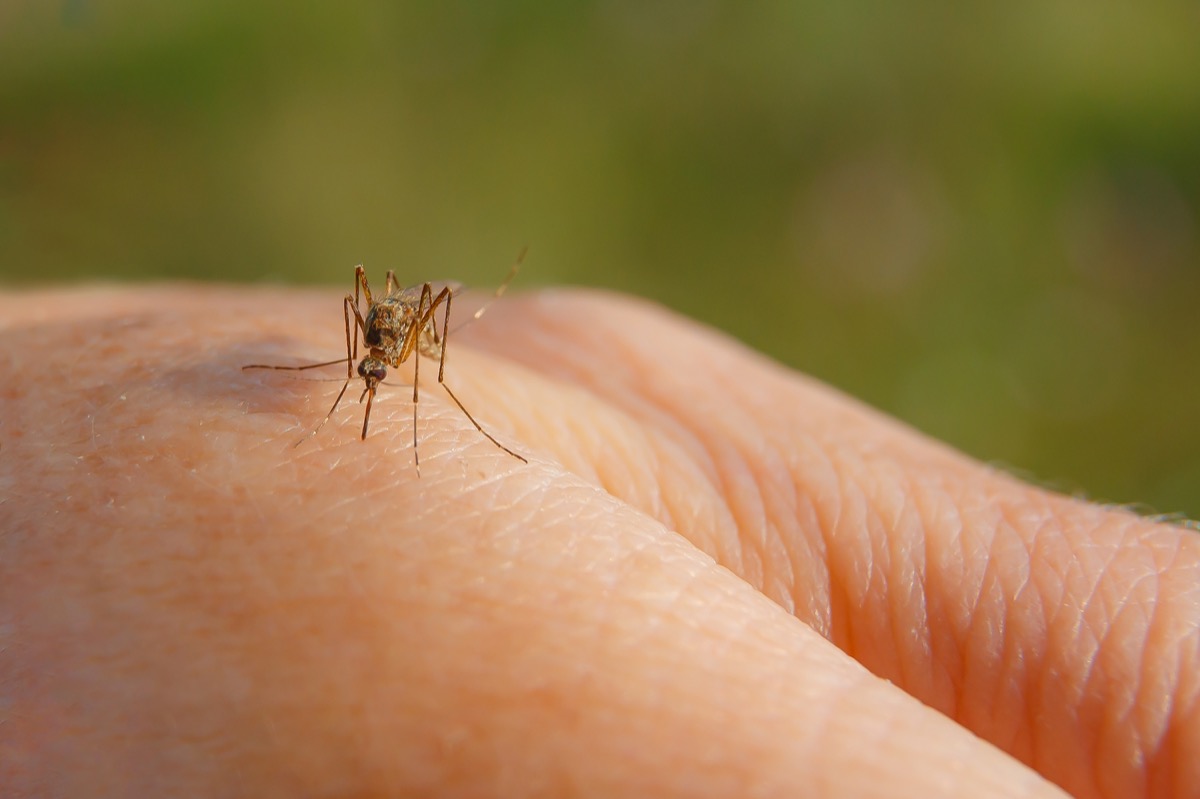
You’re probably not surprised to hear that playing electronic dance music (EDM) can scare people away—but as it turns out, it can do the same with mosquitos. In a 2019 study in Acta Tropica, researchers played the Skrillex song “Scary Monsters and Nice Sprites”—which combines “very high and very low frequencies” with “excessive loudness and constantly escalating pitch”—and it discouraged yellow fever mosquitos from biting victims and from mating.
39
Work stress can contribute to your type 2 diabetes risk.

Stressed at work? You may want to get your blood sugar levels checked. According to a 2014 study in the journal Diabetes Care, job strain is a risk factor for type 2 diabetes, independent of other lifestyle factors. “An association between job strain and diabetes is biologically plausible because stress response increases secretion of the fight-or-flight hormone cortisol,” the study authors noted.
40
Owning a dog can lower your risk of heart disease.

High levels of chronic stress are a leading cause of heart disease. But you know what helps decrease stress? Having a dog! According to the American Heart Association, dog owners typically have lower blood pressure and cholesterol levels, both of which decrease your risk of cardiovascular disease. So if your life is impacted by stress, you might want to consider adopting a canine friend.
41
Ginger can help reduce cramps and bloating.
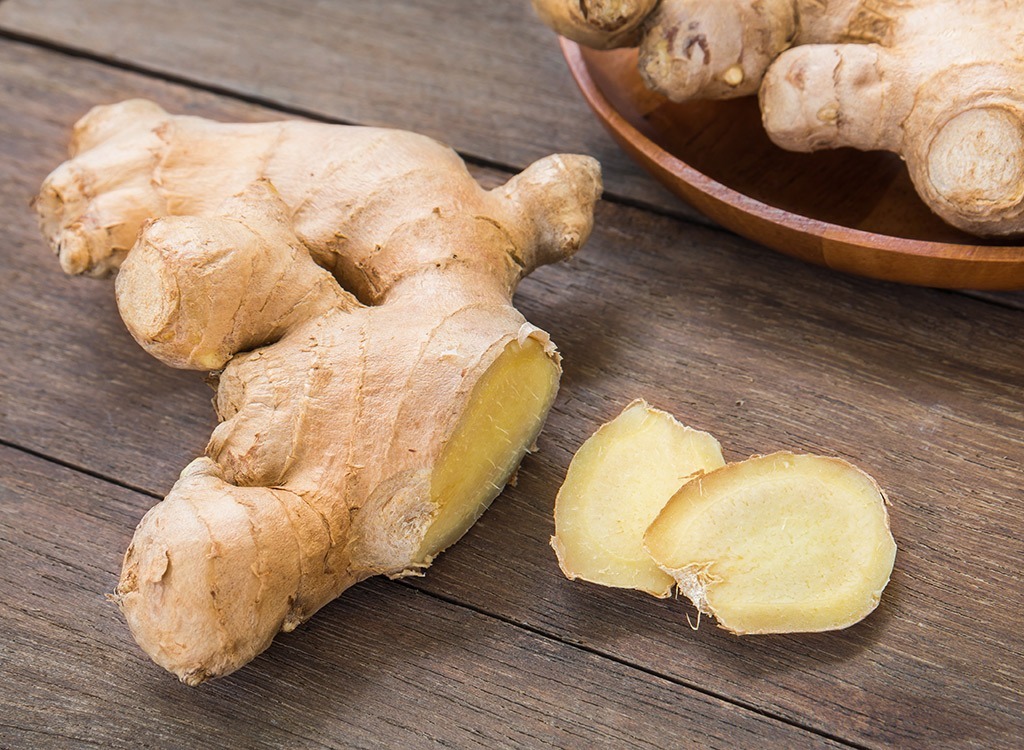
Ginger has been used for centuries as a remedy for everything from indigestion to bloating. According to a 2016 paper published in Integrative Medicine Insights, compounds in the plant, like gingerols and shogaols, aid in digestion and induce bowel movements. It’s even helpful for women on their periods: According to 2015 research published in the journal Pain Medicine, ginger is an effective remedy for menstrual cramps.
42
You could be consuming 46 hidden teaspoons of sugar a day.
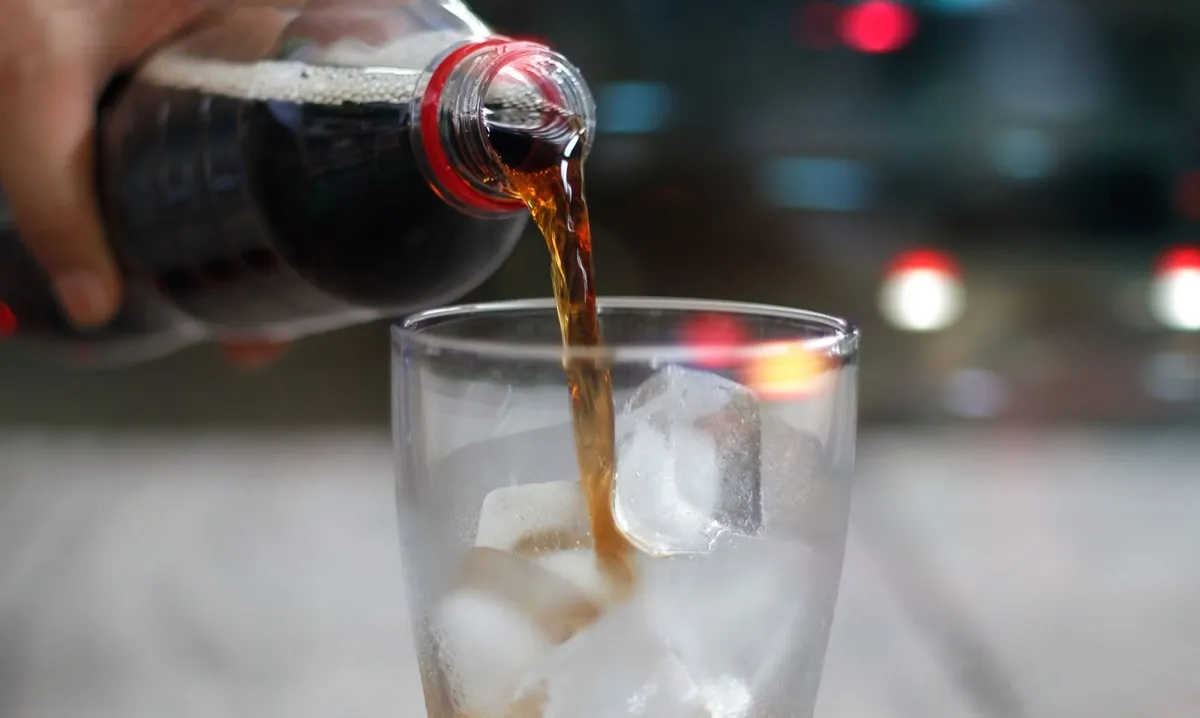
The American Heart Association recommends that women eat no more than 6 tablespoons of sugar per day and men eat no more than 9 per day. And yet, a 2010 study from Emory University found that Americans take in anywhere from 3 teaspoons to 46 teaspoons of added sugar per day. What’s more, the average person consumed 15.8 percent of their daily calories from added sugars, which lurk in everything from carbonated drinks to tomato sauces.
43
Humans consume 600 more calories a day now than they did in the ’70s.
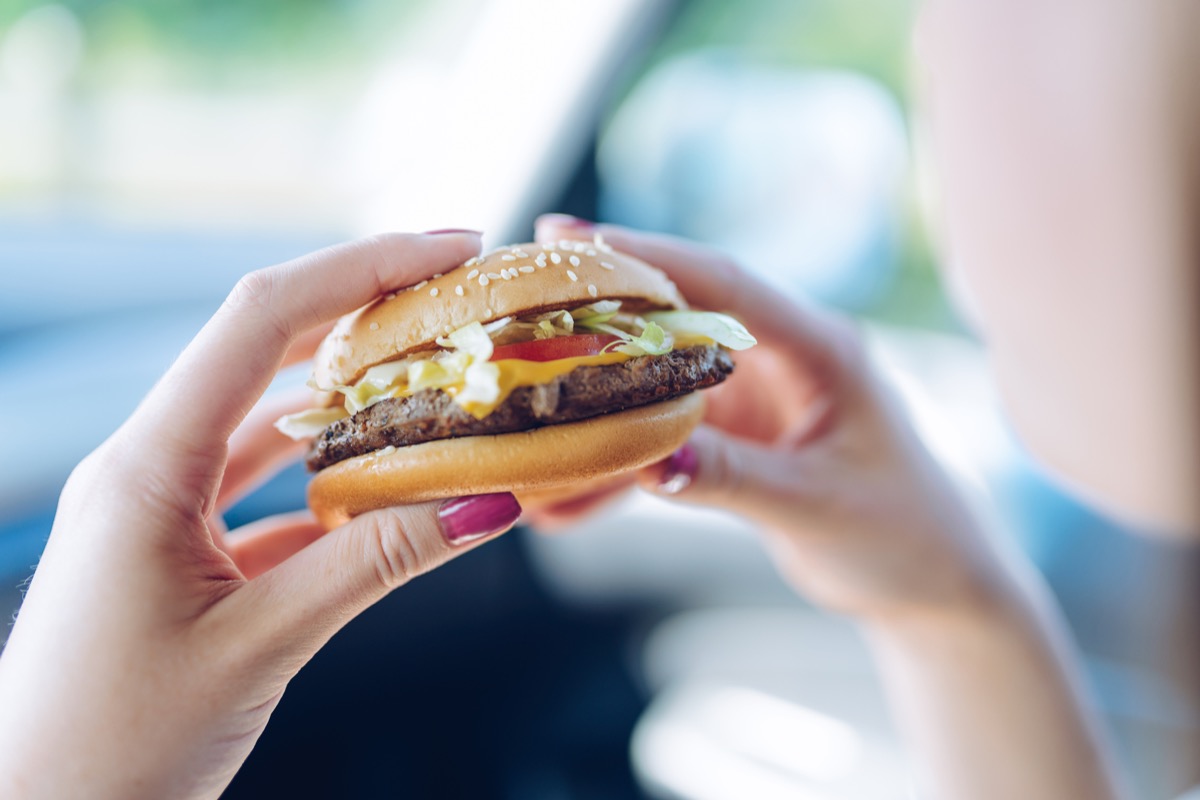
When we look back on the portraits of past generations, it’s clear that Americans have, on average, gotten bigger. And while this is likely due in part to the rise of fast food, hormones in meat and dairy products, and the streamlining of physical labor, it also comes down to a staggering increase in the number of calories we’re consuming. According to the U.S. Department of Health and Human Services, the average daily calories consumed increased by approximately 600 calories from 1970 to 2008.
44
It takes nearly two days for the human body to pass a Lego.
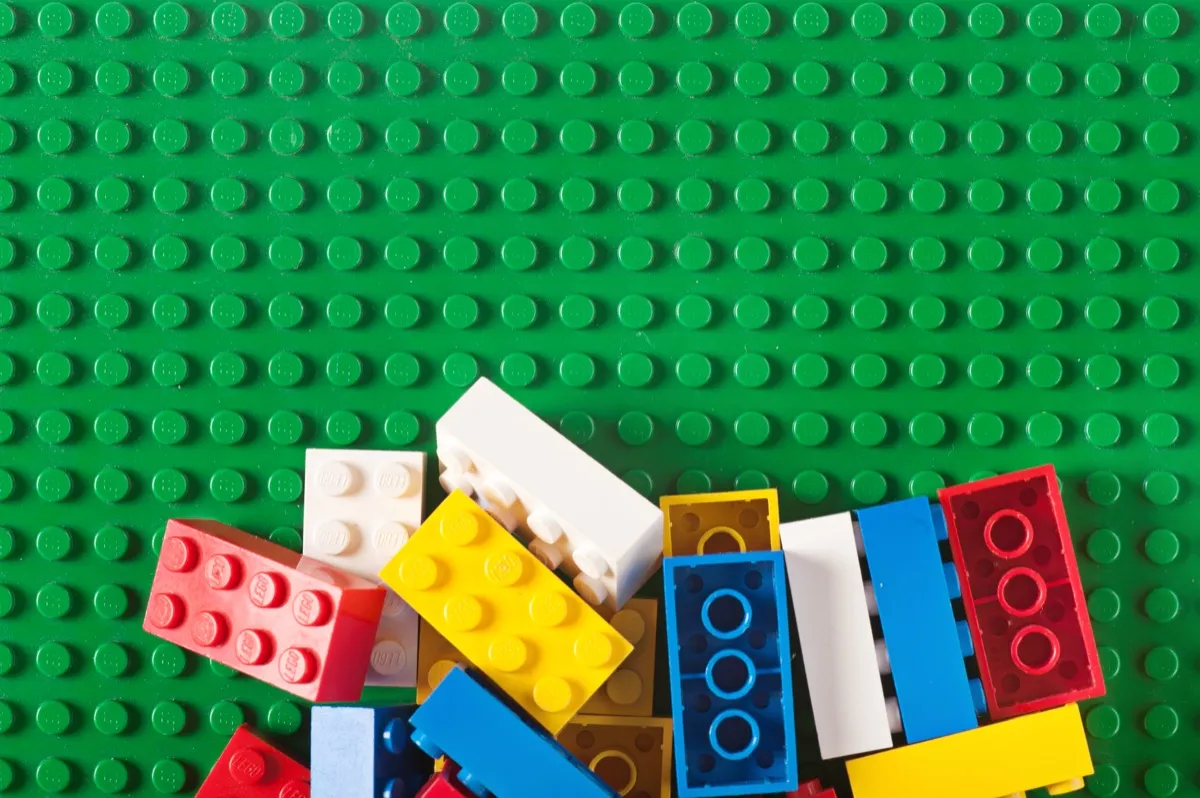
You know it hurts to step on a Lego brick, but have you ever wondered what happens when you swallow one? In a 2018 study published in the Journal of Pediatrics and Child Health, six volunteers decided to find out by ingesting a Lego figurine head (a piece that is much rounder and presumably much easier on the digestive system than a rectangular one). Based on the results, the researchers determined that it takes an average of 1.71 days for a Lego to pass through the human body.
45
You can tell if someone has high cholesterol based on their skin.
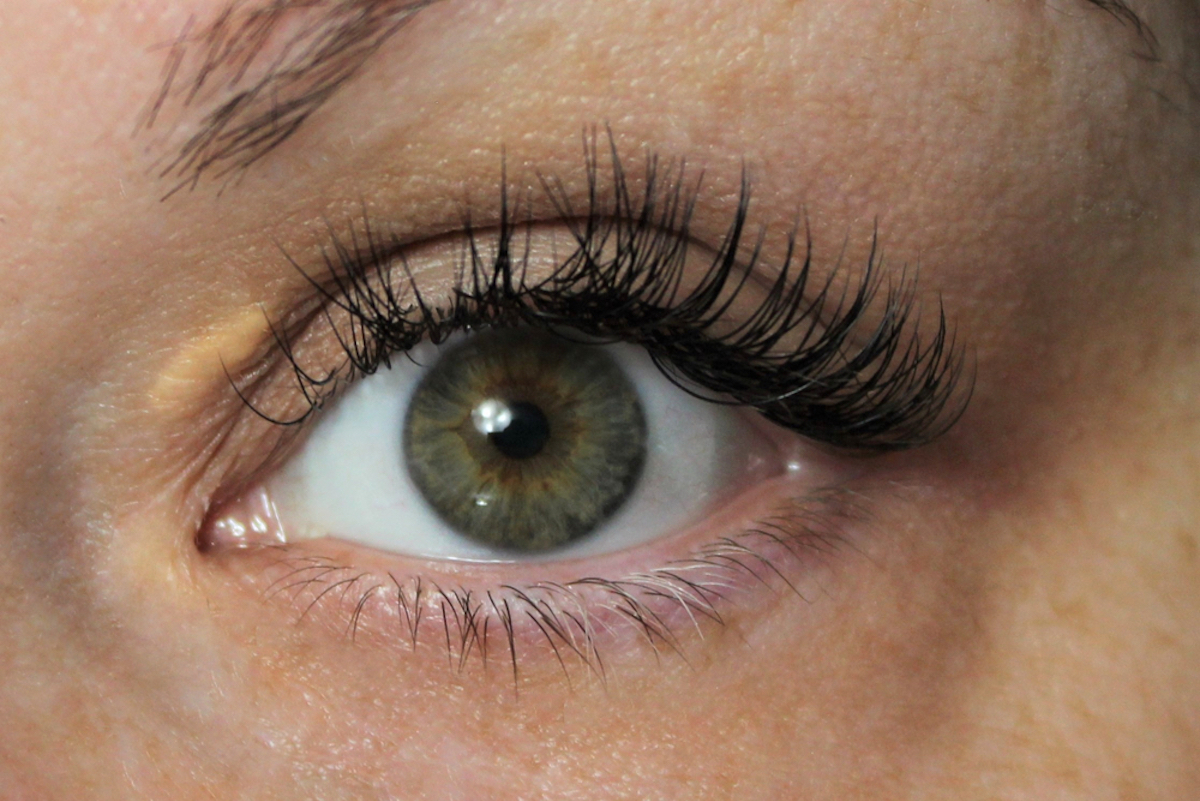
Most people know that high cholesterol can lead to life-threatening conditions like heart attack and heart disease. What’s less well-known is that high cholesterol can manifest itself on your skin, too. According to the American Osteopathic College of Dermatology (AOCD), uneven yellow patches called xanthelasma can appear on the eyelid and around the eyes as a result of overproduction of cholesterol.
46
Taking an antihistamine before bed can eliminate under-eye circles.
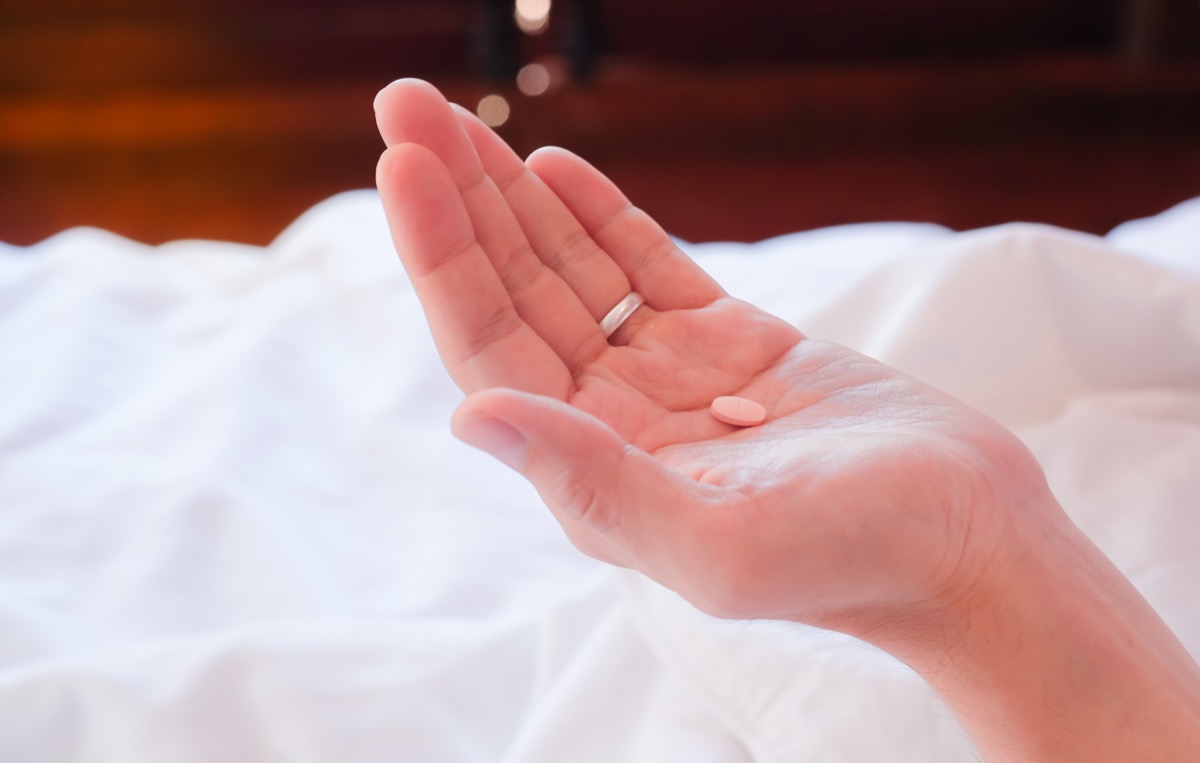
Generally, dark circles under your eyes can be avoided if you eat well, sleep well, and drink a lot of water. However, these things aren’t going to help if the cause of your under-eye bags are allergies, which the Mayo Clinic notes can be an issue. Seasonal factors—along with bedroom irritants like dust—can be a problem, so you should try taking an antihistamine before bed. Because anti-allergy medication often causes drowsiness, you’ll nod off faster as a bonus.
47
Both depression and anxiety can cause neck and shoulder issues.
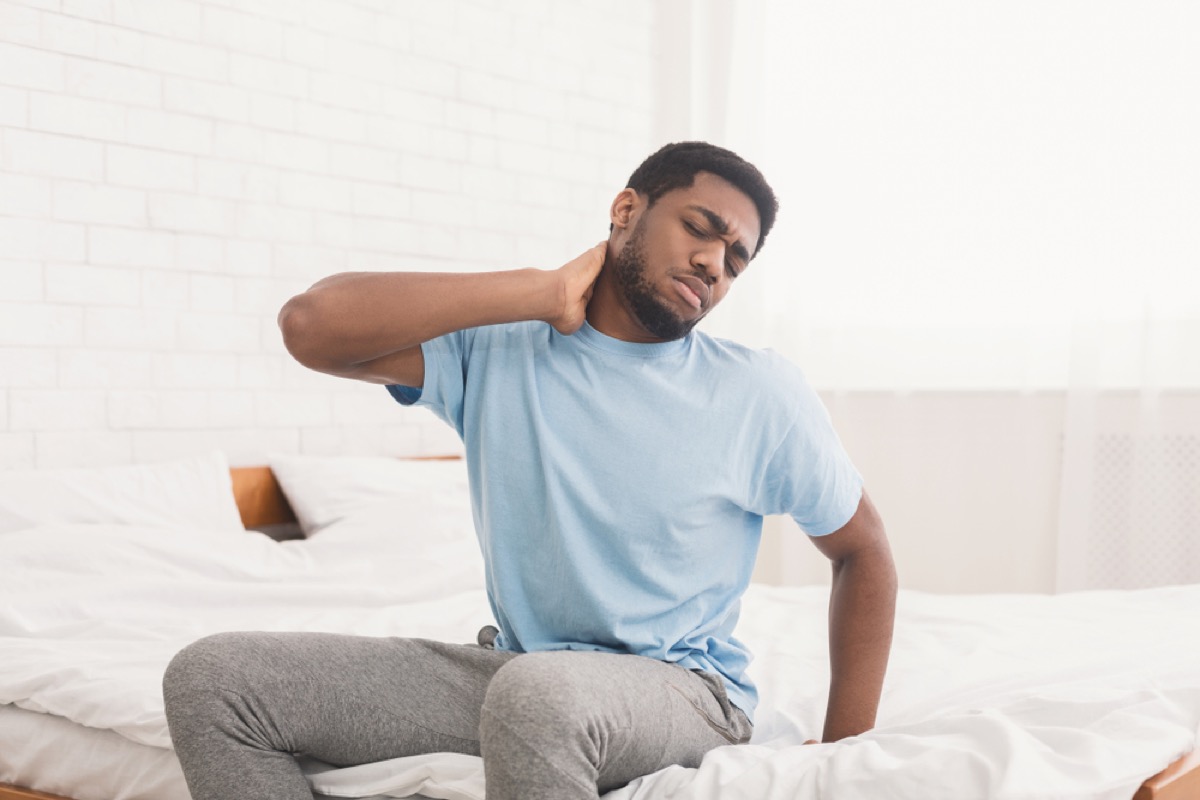
Physical pain isn’t always the result of a physical injury. In fact, if you’re experiencing chronic neck and shoulder pain, it could be due to something you’re dealing with mentally. As one 2009 survey published in BMC Musculoskeletal Disorders notes, depression and anxiety are both “significantly linked with increasing levels of neck pain.” Since stress causes the muscles to tense up, mental health issues often result in this type of pain.
48
Doctors can now 3D print a mini human heart.
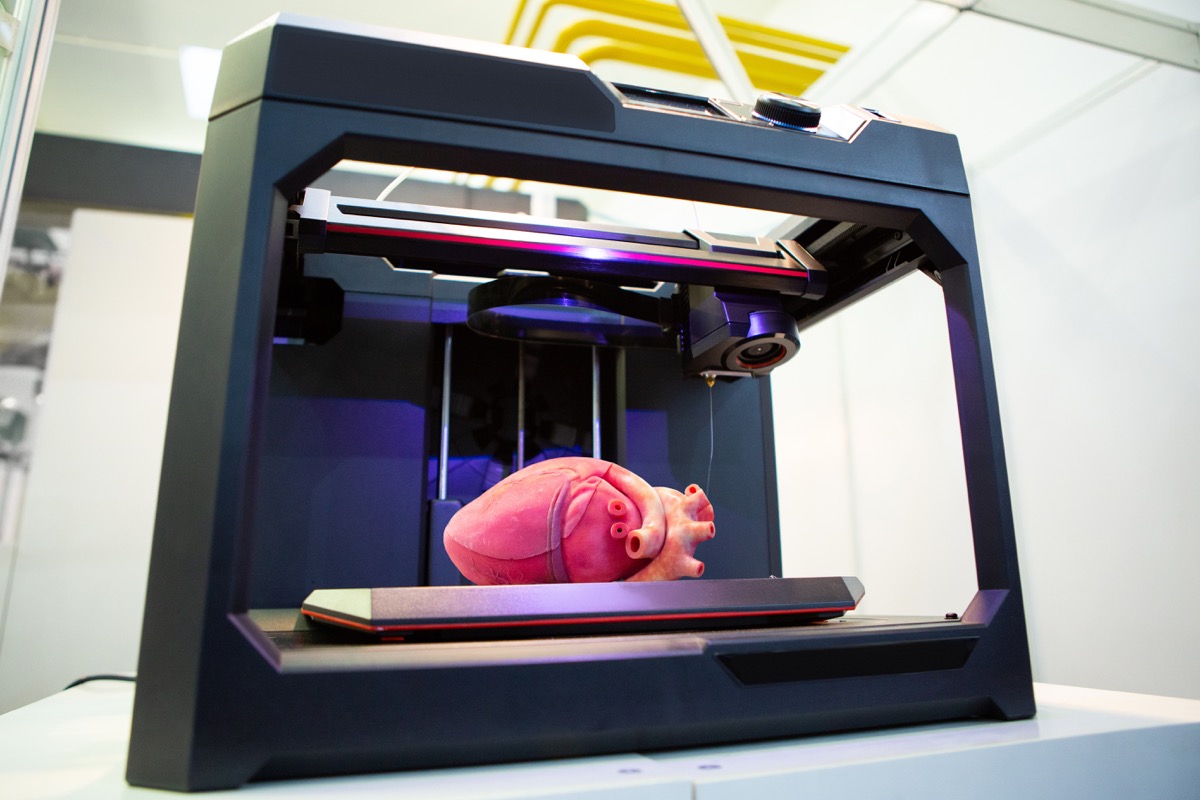
In Sept. 2019, BIOLIFE4D became the first U.S. company to 3D print a mini human heart with the exact structure of a full-sized heart and many of the same functions. It’s a major milestone toward the company’s ultimate objective: 3D-printing full-sized human hearts that can be used by surgeons in transplants and by pharmaceutical companies for safer, faster testing of new cardiac therapies.
49
Eggshells are being used to grow human bones.
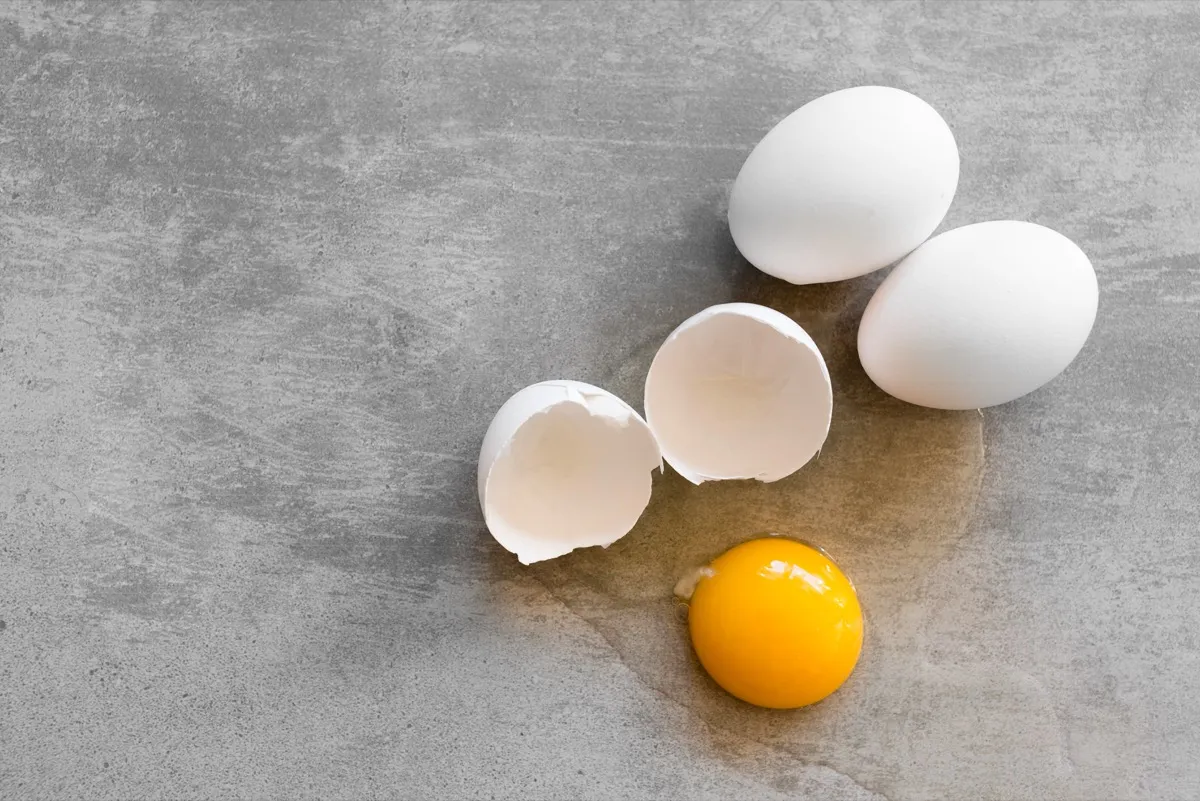
Chicken eggshells are mostly made up of calcium carbonate, a substance that also exists in human bones. That’s why researchers at the University of Massachusetts, Lowell believe that eggs are ideal for growing new bone for humans.
“There is a great need for developing new and functional materials to repair and regenerate damaged bone,” lead researcher Gulden Camci-Unal told Smithsonian magazine in 2019. “At our lab, we like to take unconventional approaches; we look at nature and try to see what we can use that already exists.”
50
Saying thank you measurably improves your mood.

Expressing gratitude may be the key to happiness, according to a 2003 study published in the Journal of Personality and Social Psychology. Researchers reported that by being thankful, you recognize the good in your life, which is crucial in overcoming depression. In fact, in their 2007 follow-up book on the subject titled Thanks!: How the New Science of Gratitude Can Make You Happier, the scientists note that “regular grateful thinking can increase happiness by as much as 25 percent.”
Additional reporting by Morgan Greenwald.